Traveling to Vietnam and have lots of questions? Then you will love “A Helpful Illustrated Guide To Planning A Trip To Vietnam!” This article is chock full of useful information for both new and experienced travelers to Vietnam so don’t spend weeks doing research when you can use the time to plan the perfect Vietnam trip instead! While it’s impossible to include every bit of information that all travelers need, we are extremely proud of this comprehensive article and believe it will be an invaluable resource for all travelers to this beautiful country!
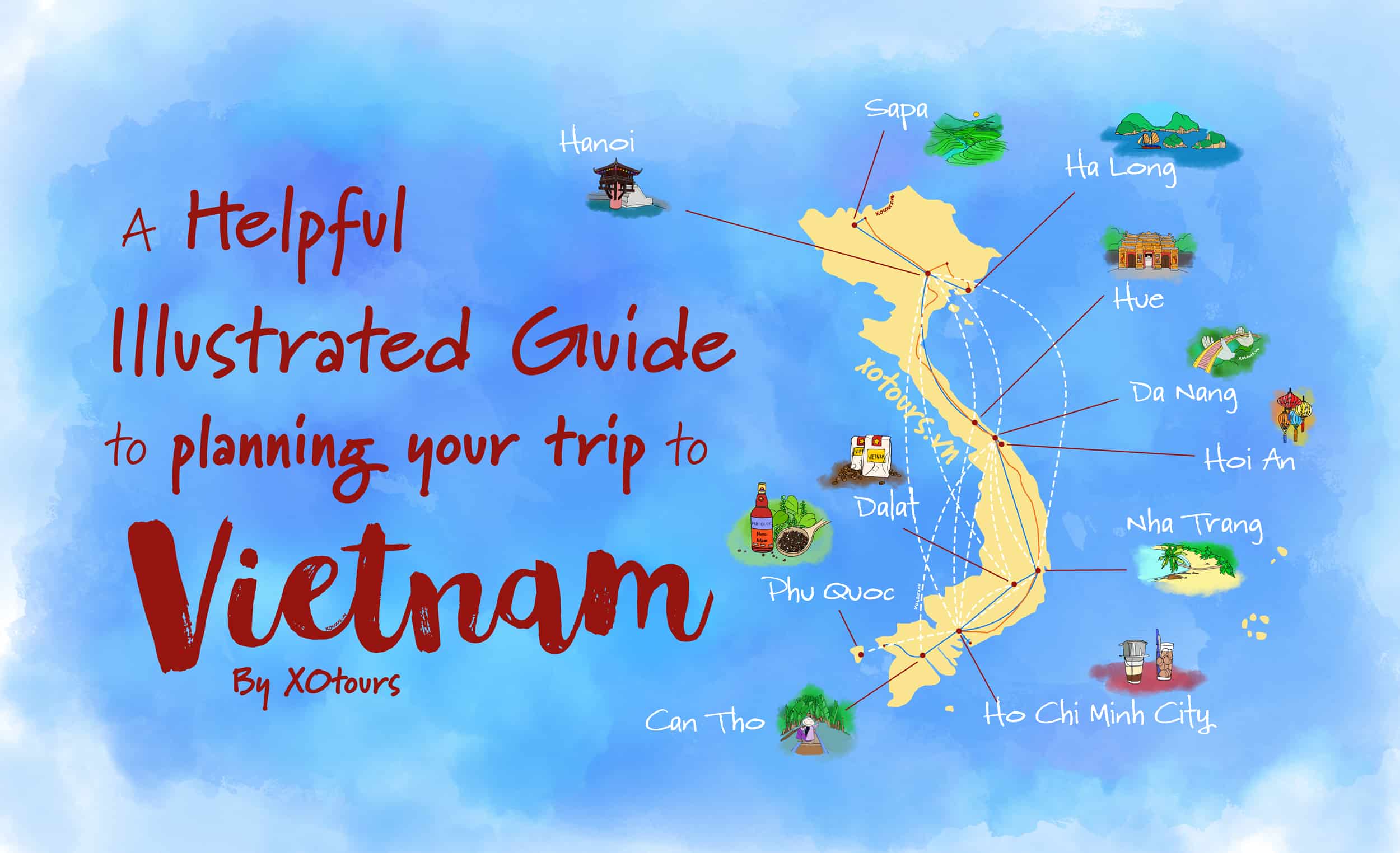
TABLE OF CONTENTS:
(Please click on the links below to jump directly to the topic you want to explore)
Part 1: What You Need to Know Before You Leave
- Planning Where to Go in Vietnam (Suggested Itineraries)
- Planning for Weather and Seasons (the rainy season, the Tet holidays, the hot season)
- Vaccinations (Recommended and optional)
- Getting a Vietnam Travel Visa (E-Visa, Visa On Arrival, Embassy Visa)
- Money (Budgeting, How much to bring, Tipping)
- Packing (quick packing list, electrical adapters)
- Where To Stay (picking a neighborhood, booking an accommodation)
Part 2: What You Need to Know Just After You Arrive
- Phone and Data Plans (Getting a SIM card, must-have apps)
- Exchanging Money (Banks, Money Exchanges, Gold Shops)
- After Landing (Going through immigration, getting a taxi from the airport)
Part 3: What You’ll Need to Know During the Trip
- Safety (staying healthy, avoiding scams)
- Medical Centres and Emergencies
- Shopping (Where to shop, gift-buying guide, How to bargain)
- Eating (Knowing where to eat, Street Food Tours)
- What to Do (Popular activities by city, Best free tours)
- Getting Around (Both within cities and between cities)
- Useful Vietnamese Words & Phrases To Know
Planning Where to Go in Vietnam (Suggested Itineraries)
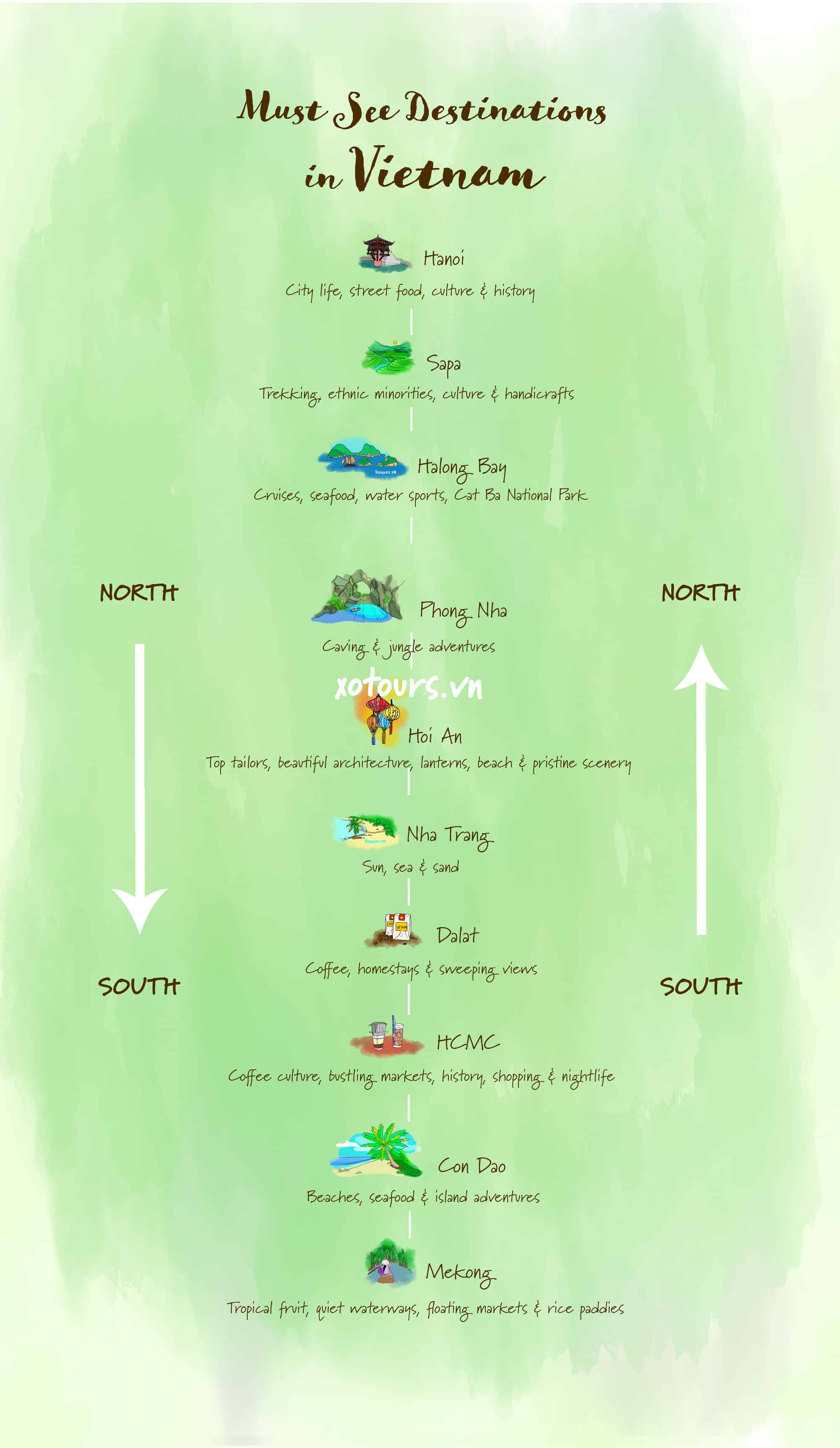
There is no “right” amount of time to spend in Vietnam, but there are certainly places in the country that warrant taking more time than others in order to get a feel for the local culture. Assuming you will spend 14 nights and you want to visit the north, central, and southern regions, here is a recommended Vietnam itinerary + how much time to budget for each city.
| Area | Number of Nights |
|---|---|
| Saigon | 2 |
| Mekong Delta | 1 |
| Nha Trang | 2 |
| Hoi An | 5 |
| Hanoi | 3 |
| Halong Bay | 1 |
If you can set aside a whole month for your trip, we would recommend the itinerary below.
| Area | Number of Nights |
|---|---|
| Saigon | 4 |
| Mekong Delta | 2 |
| Dalat | 2 |
| Nha Trang | 3 |
| Phong Nha | 2 |
| Hoi An | 7 |
| Hanoi | 5 |
| Sapa | 3 |
| Halong Bay | 2 |
Note: We realize that we left off many great places such as Phu Quoc, Hue, Tam Coc (Ninh Binh), Cat Ba, Quy Nhon, Mai Chau and Pu Luong off our list but most travelers to Vietnam only have 1 month or less in the country, and we feel that trying to fit in too many places within such a short period of time would be overwhelming.
For a more personalized and detailed look at how long you should spend in each Vietnamese city, check out our post: planning your Vietnam itinerary.
Alternatively, if you are seeking more off-the-beaten-track destinations in Vietnam, we’ve also made some suggestions.
Planning for Weather and Seasons in Vietnam
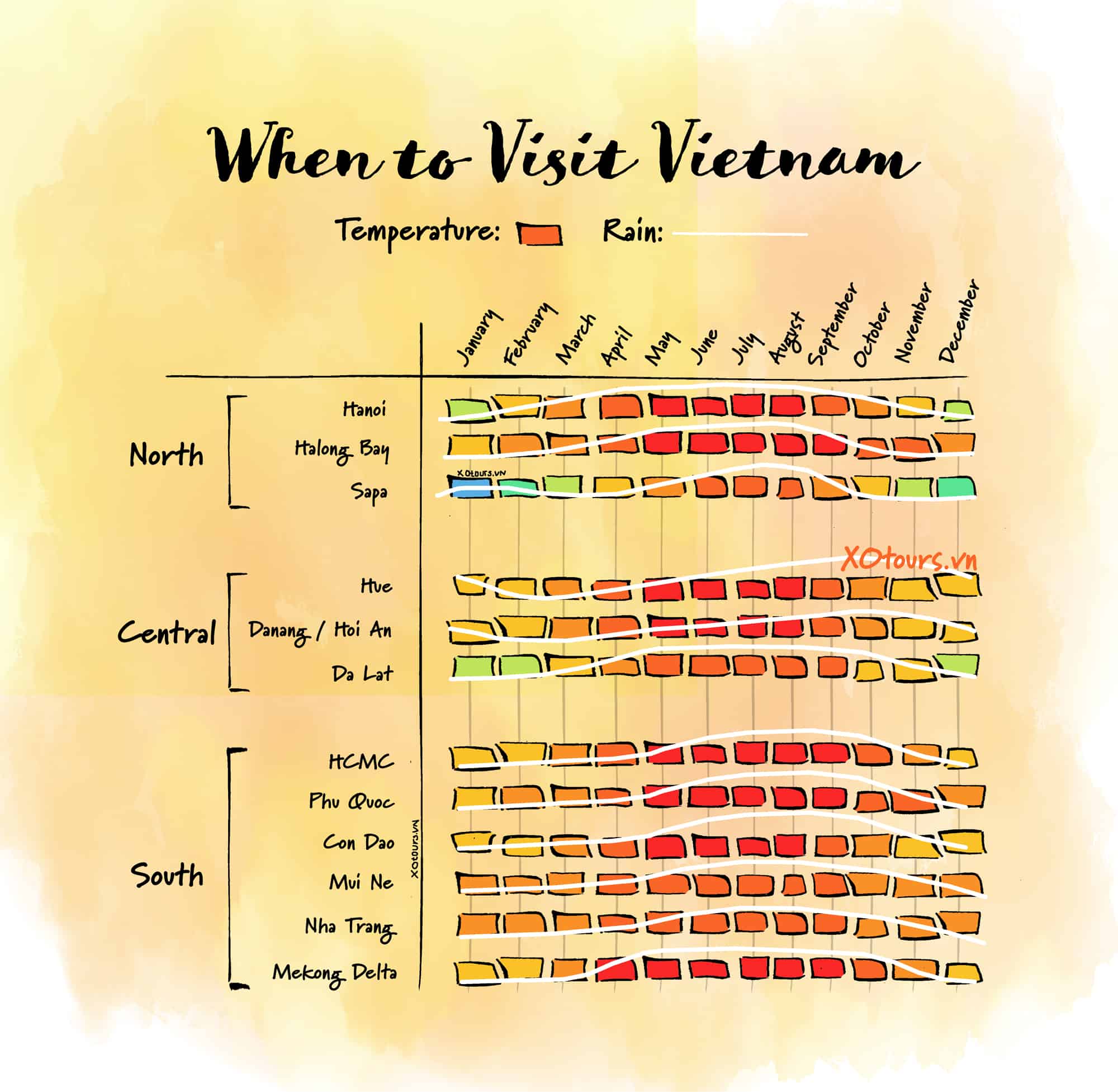
The varying weather in Vietnam throughout the year may also affect where you choose to travel in the country. Before you buy your tickets, familiarize yourself with Vietnam’s weather patterns.
What’s the Weather Like in Vietnam?
“Vietnam has two seasons, the rainy season and the hot season.” Locals love repeating this expression but unfortunately, it’s a massive oversimplification. The weather in the northern, southern, and central regions of the country is very different. Each area has a different timeline for wet and dry seasons, and a different climate during each of those seasons. The most detailed post we’ve found on the subject can be found on this website:
https://www.selectiveasia.com/vietnam-holidays/weather
What’s the rainy season like in Vietnam?
The rain in Vietnam can be more intense than most travelers are accustomed to. In the North, it can disrupt travel and cause many tour operators (e.g. Halong Bay cruises) to cancel reservations, so you should keep this in mind when traveling during the monsoon season. The rain in South Vietnam is considerably more moderate and you will rarely see all day rains like you find in the central and northern regions.
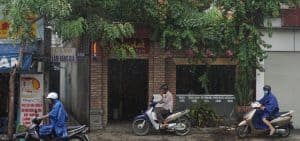
When is the best time to visit Vietnam?
If you’re prioritizing dry weather, here are the best times to visit various regions and cities of Vietnam.
- Northern and Southern Vietnam Cities — November-March
Includes Saigon, Hanoi, Dalat, The Mekong Delta, Ha Long Bay, Phu Quoc, Sapa, and Mui Ne.
- Central Vietnam Cities — January-Mid August
Includes Da Nang, Hue, Hoi An, Quy Nhon, and Nha Trang.
Of course, just staying dry isn’t everything. You don’t want to be uncomfortably hot on your trip, and you need to know what kind of temperatures you will be facing to help with your packing list (see the “what to pack” section of this post). The graph below shows average temperatures during each month of the year in four of Vietnam’s most popular travel cities.
Note: Hoi An often suffers from heavy rains and flooding in November
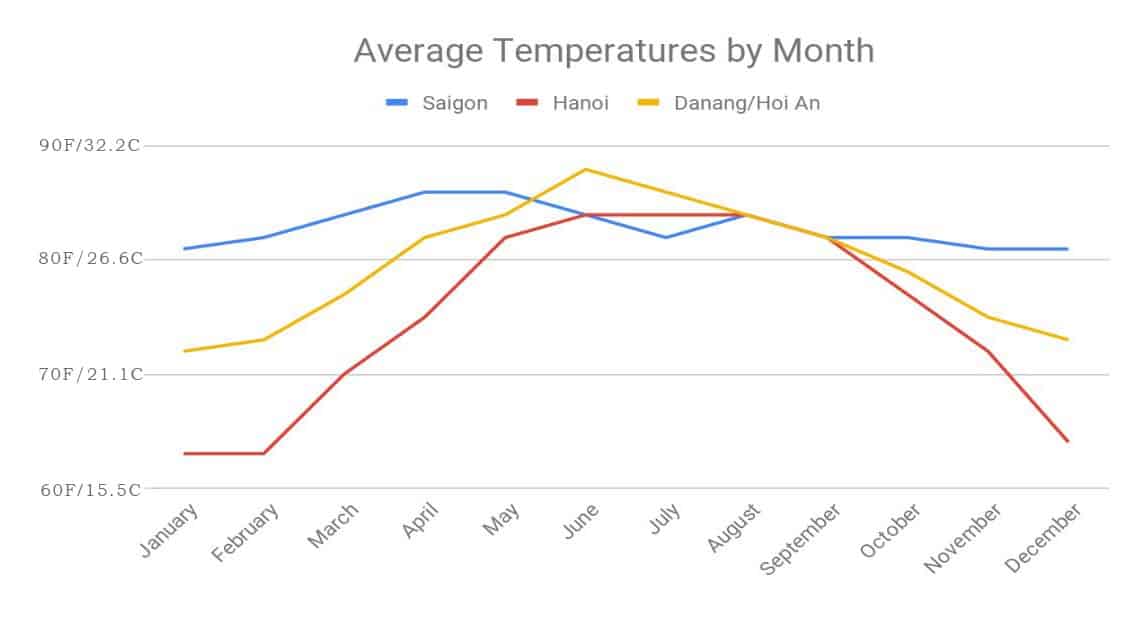
As you can see, it stays fairly hot in Saigon and Southern Vietnam all year round. It is a bit more temperate in Danang, Hoi An, and the central cities most of the time, although it gets even hotter than the South during the Summer. Hanoi and the Northern cities are almost always cooler than anywhere else in Vietnam.
The bottom line is that Vietnam’s weather and climate vary so drastically that there is no one best time to go. We’ve had many experiences hopping on a plane, flying to another part of the country, and having it be much warmer (or cooler) at the destination airport.
January-March is a dry, reasonably cool time throughout Vietnam, so if you absolutely need a straight answer to the question of the best time to visit Vietnam, that would be it.
Note: The average temperatures shown in the chart above also includes overnight temperatures which brings down the overall average. The temperature during the hottest periods of the day can easily hit 40 degrees Celsius (104 degrees Fahrenheit) and feel even hotter with the humidity, so please keep this in mind when you make your travel plans.
Should I Visit Vietnam During Tet?
There’s one more important season we have yet to mention, and that is the Lunar New Year. It is no coincidence that this season falls directly in the center of the “sweet spot” time of the year we mentioned — Tet generally takes place in late January to mid-February.
During Tet, the big cities clear out as locals leave to spend the holidays with their families in their hometowns. Most of the businesses in cities close, too.
That being said, visiting during the Lunar New Year certainly has its upsides. There are a variety of cultural and religious events that occur only during this time of the year. The emptied-out cities also make a great backdrop for photo expeditions and peaceful walks through otherwise crowded, intensely busy streets. Some of our most picturesque memories of urban Vietnam have been formed strolling down quiet, empty side streets during Tet, taking in the aromas of local foods, the sounds of traditional Vietnamese “bolero” music drifting out of windows, and the cheerful smiles of families spending time together on their front stoops.

For a better idea of why visiting Vietnam during Tet may be a good option, check out our post about things to do in Saigon during Tet.
What Vaccinations Do I Need for Vietnam?
Vaccines are not technically required to visit Vietnam. No one will stop you from flying if you have not gotten your shots. But there are a few musts you should definitely look into before you go. Note that a few of these vaccines need to be administered weeks or even months before your trip.
Let’s point out before summarizing recommended vaccines that Vietnam is not a particularly disease-ridden country. Almost all foreign destinations have a few recommended vaccinations.
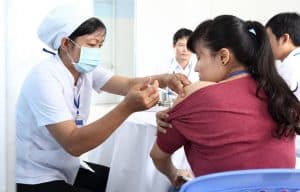
Highly Recommended by Most Disease Bureaus:
- Tetanus — The air in Vietnamese cities is filled with dust particles that can infect an open wound.
- Hepatitis A — Spread through unhygienic food prep, Hep A is extremely common in Vietnam.
- Hepatitis B — Essentially a rarer and more serious form of Hep A.
- Measles — Measles is highly contagious, and urban Vietnam is very densely populated with possible hosts.
- Typhoid — Mosquitoes with typhoid have been eradicated in Vietnam’s cities, but there is still a remote chance of a countryside mosquito carrying it. It’s no fun being trapped in one location during a vacation, so we’d recommend you get it regardless of your plans.
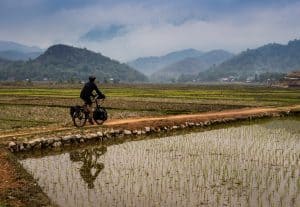
Optional:
- Rabies — Important if you want to see Vietnamese wildlife or explore the country’s forests.
- Cholera — Spread through unclean food. It’s rare, even in Vietnam, but better safe than sorry.
- Meningococcal meningitis — It’s very rare, but it is highly contagious.
The above recommendations are the most commonly prescribed vaccinations, but specific countries may have their own recommended vaccines not present on the list. For further reading, here are links to the major disease control bureaus in Australia, the US, UK, and Singapore.
Australia: https://www.travelvaccinationclinic.com.au/destinations-advice/vaccinations-for-vietnam/
United States: https://www.tmb.ie/destinations/vaccinations-for-viet-nam
UK: https://travelvaccination.co.uk/vaccinations/vietnam/
Singapore: sgh.com.sg/patient-care/specialties-services/Travel-Clinic/Pages/Travel-Health-Information
COVID-19 Update:
As of May 15, 2022, all COVID-19 related regulations for entry into Vietnam were lifted. This means visitors are not required to provide a proof of vaccination or a negative test result for COVID-19 to enter Vietnam.
Getting a Vietnam Visa
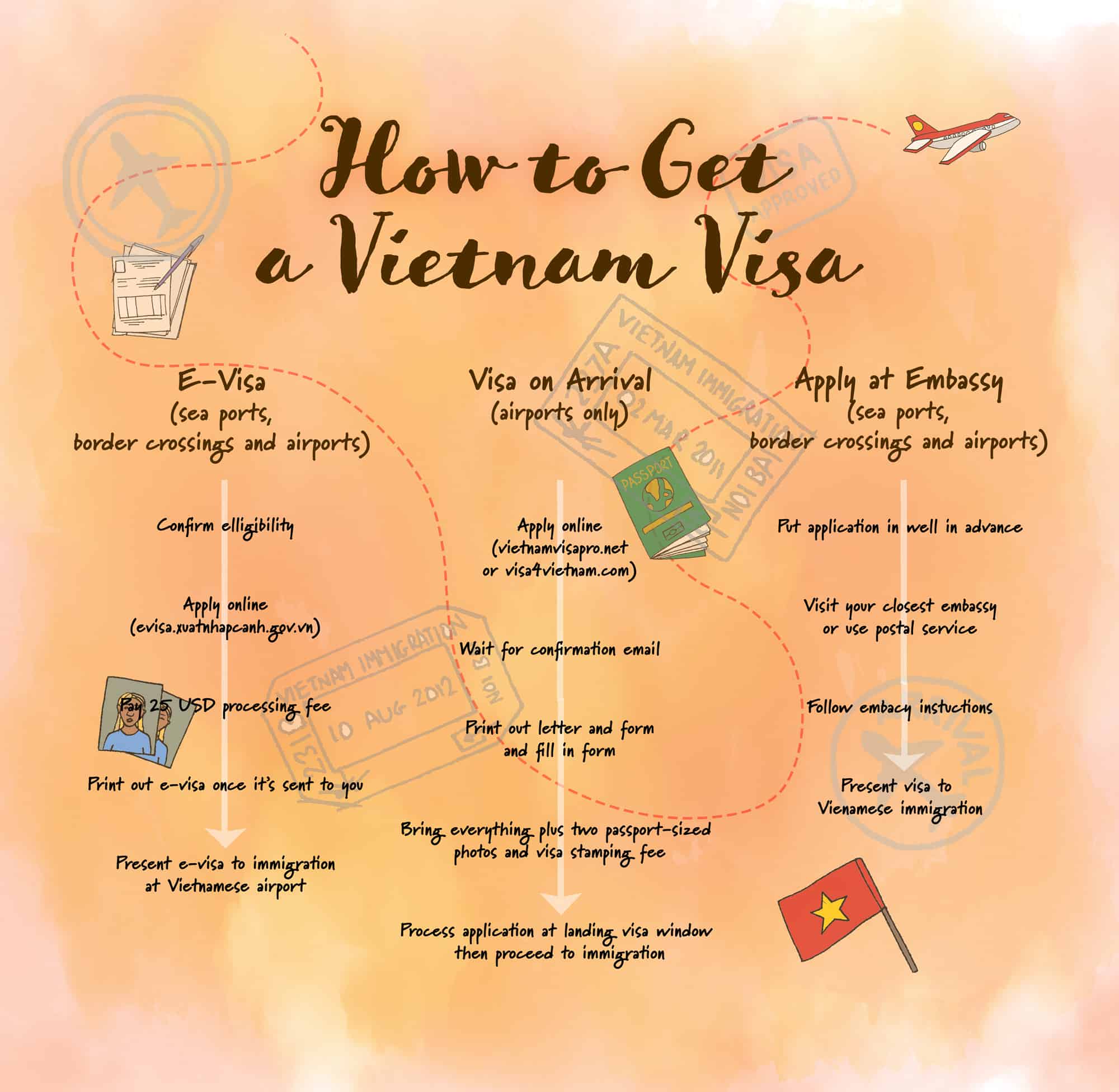
Visa procedures can be a real pain. Governments have zero-tolerance when it comes to immigration proceedings, and that generally means dealing with a lot of unfriendly people. As long as you know what to plan for and who to give it to however, getting a Vietnam Visa can be relatively stress-free.
Countries That Don’t Require A Visa To Come To Vietnam
Passports holders for the 24 countries listed below do not require a visa to come to Vietnam however the exemption is only valid for the number of days listed.
|
Countries |
Passport Required | Maximum Stay |
| Belarus | Yes | Maximum 15 days |
| Brunei | Yes | Maximum 14 days |
| Cambodia | Yes | Maximum 30 days |
| Chile | Yes | Maximum 90 days |
| Denmark | Yes | Maximum 15 days |
| Finland | Yes | Maximum 15 days |
| France | Yes | Maximum 15 days |
| Germany | Yes | Maximum 15 days |
| Indonesia | Yes | Maximum 30 days |
| Italy | Yes | Maximum 15 days |
| Japan | Yes | Maximum 15 days |
| Kyrgyzstan | Yes | Maximum 30 days |
| Laos | Yes | Maximum 30 days |
| Malaysia | Yes | Maximum 30 days |
| Myanmar | Yes | Maximum 14 days |
| Norway | Yes | Maximum 15 days |
| Panama | Yes | Maximum 90 days |
| Philippines | Yes | Maximum 21 days |
| Russia | Yes | Maximum 15 days |
| Singapore | Yes | Maximum 30 days |
| South Korea | Yes | Maximum 15 days |
| Spain | Yes | Maximum 15 days |
| Sweden | Yes | Maximum 15 days |
| Thailand | Yes | Maximum 30 days |
| United Kingdom | Yes |
Maximum 15 days |
*source: www.myvietnamvisa.com
**A gap of at least 30 days between two visa-free visits is required. Must have a printout of onward ticket – update: as of March 15th, 2023, it is NOT required that there is a 31 days before your exit and re-entry for passport holders from the following countries: Germany, France, Italy, Spain, UK, Russia, Japan, South Korea, Denmark, Sweden, Norway, Finland and Belarus
For a full chart of visa-free eligibility and non-eligibility, please visit Vietnamese Consulate’s official website in the link below:
https://lanhsuvietnam.gov.vn/Lists/BaiViet/B%C3%A0i%20vi%E1%BA%BFt/DispForm.aspx?List=dc7c7d75%2D6a32%2D4215%2Dafeb%2D47d4bee70eee&ID=306
Vietnam provides all foreign travelers flying directly to Phu Quoc a 30-day Visa exemption even if you transit at another international border before coming to Phu Quoc Island.
If you plan on traveling to the mainland however, then you will need to be holding a Visa exempt passport, or you will need to obtain a Vietnam Visa using one of the methods listed below.
E-Visa
For travelers that need to obtain a Vietnam Visa there are a few different methods but the easiest and cheapest way is to get an e-visa, a process where you:
- Apply for a visa letter online at least a week before your trip. The processing fee is 25 USD.
- Print out the e-visa once it’s sent to you. It can take up between 3 to 6 days to arrive. Your e-visa should look similar to the image below.
- Bring the e-visa with you on your flight.
- Present your e-visa to the immigration clerk at the Vietnamese airport.
Note: You will NOT need a visa stamped in your passport if you use e-visa.
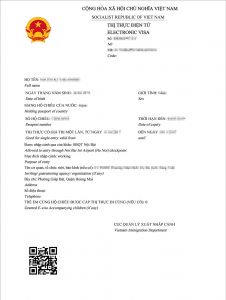
List of countries that allowed e-Visa:
https://evisa.xuatnhapcanh.gov.vn/documents/20181/117155/Vietnam-Evisa-nation-list.pdf/21e0f88f-d8a0-48b8-bfdb-a0f82b0853e2
List of ports that allowed foreigners to enter and exit Vietnam by Vietnamese e-Visa:
https://evisa.xuatnhapcanh.gov.vn/documents/20181/117155/List-of-evisa-port.pdf/c774e24b-1ab8-4fb6-9ac1-dcdfaccecf8e
E-visas save you money and hassle, and they are good for 30 days. Note that they are only single-entry, so you’ll have to get another e-visa to reenter Vietnam if you plan to reenter the country within a month. You can apply for an E-Visa at any time before your trip, so apply as soon as you lock in your travel dates and you will have 1 less thing to worry about!
To get started, visit the only official Vietnam e-visa site: https://evisa.xuatnhapcanh.gov.vn/web/guest/trang-chu-ttdt
E-visas are available to most nationalities, although there are some that cannot get it. For an in-depth breakdown of how to go about the process and a list of which countries can do it, head over to our post on getting a Vietnam visa.
Note 1: Make sure that you triple check your personal details before you submit your E-Visa application. Your name and other details have to match the information in your passport. If they do not match, your E-Visa will be invalid and you will most likely have to pay hundreds of dollars at the airport for an emergency Visa.
Note 2: For the “Residential Address in Vietnam” you can just enter the address of your first accommodation.
Note 3: Most applicants receive their E-Visa within 3 days however it is not unusual for it to take over 1 week, so be patient!
Other Visa Types (Visa on Arrival and Embassy Visa)
Individuals can no longer obtain a Visa on Arrival through Visa agents on their own. You can now only obtain Visa on Arrivals through a sponsorship from a tour operator.
If your country is not eligible for a Visa Exemption and is not on the list of 80 countries that can obtain an E-Visa, you will need to obtain a Visa on Arrival through a sponsor as mentioned above or obtain a visa at your local Vietnamese embassy before you leave. For more info on both of these options, read the visa guide linked to above.
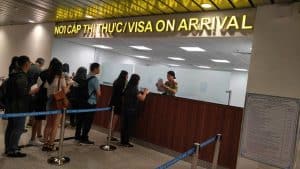
Using Money in Vietnam
The Vietnamese Dong can be a confusing currency for travelers, as there are roughly 24,000 VND to a US dollar (exchange rate as of May 2023). To help you stay on top of your finances, familiarize yourself with how much each VND denomination correlates with your own currency or the US Dollar and follow the advice provided below.
How much money should I bring to Vietnam?
We recommend bringing around $500 USD per person and carrying a couple of credit/ATM cards — no-fee if possible. Banks and ATMs are plentiful in Vietnam’s large cities, as much so as they would be in Western metropolises, but it’s always a good idea to bring a small bit of cash with you when you come to Vietnam just in case you have trouble getting your card to work.
There may be high withdrawal fees for foreign cards, but putting up with a $2 fee per transaction is better than carrying around thousands of dollars. Bag snatching and other petty theft is common in Vietnam so carrying around a lot of cash is risky.
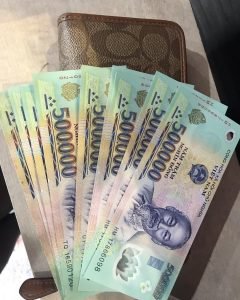
Or, even better, get an account at a bank in your home country that offers refunds on ATM transaction fees worldwide! A few reputable banks that offer this service include:
- Charles Schwab Bank (US)
- ING, Orange Everyday Account only (Australia)
- Citi, Plus Transaction Account only (Worldwide)
- HSBC, Everyday Global Account only (Worldwide)
Which ATMs to use in Vietnam
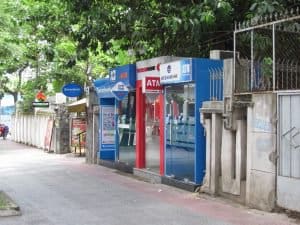
ATMs are absolutely everywhere in every large Vietnamese city. They work very well and are completely safe to use. They will usually let you withdraw 2-3 million VND (83-125 USD) per transaction, although there are a few banks that tend to put higher withdrawal limits on their ATMs. They include:
- ANZ (10 mil limit)
- Commonwealth (9 mil limit)
- Citibank (8 mil limit)
- HSBC (5 mil limit)
- ACB (5 mil limit)
Note 1: These limits are not guaranteed, as different ATMs of the same bank can have different withdrawal limits.
Note 2: Vietnamese ATMs will eat the card if there is no activity at the ATM for 30 seconds. This can mean disaster if the eaten card is your sole source of money retrieval. So be sure to cancel the transaction if you need to tend to something before your card is returned.
Note 3: Remember to call your bank and put a travel exception on your card before arriving in Vietnam, or else your card may not work.
Vietnamese ATMs always have both English and Vietnamese options, and the screen automatically displayed when a card is inserted will ask which you want to use.
For more information about ATMs in Vietnam and other subjects relating to managing your cash while here, check out our post on money in Vietnam.
How much do things cost in Vietnam?
| Item | Low-End Price (VND) | High-End Price (VND) |
|---|---|---|
| Clothes | ||
| Pair of Jeans | 240k | 550k |
| Pair of flip-flops | 40k | 280k |
| T-shirts | 50k | 400k |
| Sunglasses | 70k | 320k |
| Light Jacket | 250k | 500k |
| Baseball cap | 60k | 250k |
| Food | ||
| Bowl of Pho | 30k | 75k |
| Banh mi sandwich | 15k | 40k |
| Fresh Spring Roll | 6k | 14k |
| Ice Cream | 20k | 85k |
| Smoothie | 20k | 50k |
| Iced Coffee | 12k | 40k |
| Other | ||
| Backpack | 150k | 700k |
| Watch | 180k | 1 million |
| Suitcase | 500k | 2 million |
| Leather Handbag | 500k | 3 million |
How much things cost in Vietnam depends on where you shop. Items at a local market may awe you with their low prices, but shopping in a luxury mall will often be more expensive than it would be at a mall back home. You may pay 40,000 VND ($1.66) for a low-quality silk-print t-shirt at the local market, for example, and 450,000 VND ($18.75) for a higher-quality t-shirt at the mall.
The table above provides an average price for the low-end and high-end versions of a few commonly-bought items. Think of “low-end” as a price you might find in a wet market, and “high-end” as a price you might find in a shopping mall. These prices serve only as guidelines to help you realize when you’re being overcharged.
How much money should I budget per day?
How much you should budget depends on how extravagantly you will be living. The table below shows three “cost tiers” for approximately what you should budget during your trip to Vietnam. We realize that most travelers will not fit exactly within each cost tier, so feel free to mix and match the cost of things within the table to estimate your personal daily budget.
| Backpacker ($) | Mid-End Traveler ($$) | Luxury Traveler ($$$) | |
|---|---|---|---|
| Food & Drinks | 6-10 USD (Street food) | 20-30 USD (street food and local restaurants) | 80-150 USD (High-end Vietnamese and Western restaurants) |
| Shopping (souvenirs etc.) | 5-6 USD (A t-shirt or tchotchke here or there) | 15-25 USD (paper lanterns, table runners, etc) | 50-100 USD (handicrafts and local art pieces) |
| Daily Transportation (not including flights) | 2-4 USD (Lots of walking, some Grab Bike) | 11-15 USD (Grab Cars and Taxis) | 40-78 USD (Private car) |
| Tours & Activities | 0-8 USD (free student tours with cost of entry fees + food/drinks) | 20-45 USD (group tours) | 60-150 USD (private tours) |
| Accommodation | 7-15 USD (backpacker hostels) | 35-50 USD (3 star hotels and B&Bs) | 120-500 USD (5 star hotels and resorts) |
| Total | 15-25 USD/day | 50-100 USD/day | 150 and up USD/day |
Note: The costs shown in the table above are per person. The total budgets per day are not the averages of all the costs listed above them because most travelers won’t shop, eat at restaurants or go on tours everyday. And unless you are a solo traveler, some of the expenses, like hiring a car or renting a nice hotel room will be shared between multiple people.
The costs shown are estimated for a big city like Saigon or Hanoi. If you’re going to be in a smaller city, you can budget 75% of these prices.
Is Tipping Expected in Vietnam?
Tipping is not required or expected in most places in Vietnam. At a high-end restaurant, a small service charge may be included in your bill. If you’re at a lower-scale dining establishment, a tip may seem strange. Giving a tip of 10-40k VND to a taxi driver, depending on the length of the trip, is common. Tipping tour guides is not necessary however if you are provided with great service, a tip is always appreciated.
Beware that many masseuses expect a hefty tip on top of the massage fee the spa charges so if you visit a massage parlor or spa, please confirm that the massage price already includes the tip or that no extra tip is expected.
Things To Pack For A Vietnam Trip
Here is a list of essentials you should bring. We have not included routine items that you need to pack for any trip; we have faith that our readers will be able to remember toothbrushes and underwear.
The list below is scaled for a 14-day trip to Vietnam. If you’re staying for a month, you’ll need to do laundry three times (once a week) instead of one.
Clothing (during the dry season)
- 4 short-sleeve button-up shirts
- 7 t-shirts/sundresses
- 3 long-sleeve button-up shirts
- 1 jacket
- 1 sarong for temples (women)
- 7 pairs of shorts
- 2 pairs of jeans
- 1 bathing suit
- 1 pair of sandals/flip-flops
- 1 pair of sneakers
- 1 pair of sunglasses
Note 1: This list assumes you’ll do laundry once. In Vietnam, fluff-and-fold laundromats are plentiful and very inexpensive.
Note 2: It can get pretty cold in North Vietnam between December and March so you should consider packing a warm jacket and other winter clothing if you visit areas like Hanoi and Halong Bay during those months.
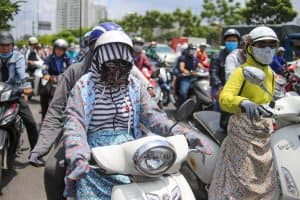
Electronics
- Phone with external SIM card slots (preferably a smartphone)
- Phone charger
- External battery
- Electrical adapters with multiple sockets (see section below)
- Laptop, tablet, or eReader for long trips
Note: Be protective of your laptop and other expensive equipment and don’t leave them out in the open while you’re not in your accommodation. Expensive electronics should be kept on your person, locked in a secure suitcase or placed in a room safe at all times!
Safety
- Mosquito spray
- Sunscreen with high SPF
- Filtered face masks
- Hand sanitizer
- Suitcase locks
Documents
- Passport
- Visa letter if getting visa on arrival or E-Visa
- Several passport-sized photos
- Return ticket confirmation — this may be checked on arrival in Vietnam
- Accommodation confirmation — may be checked on arrival
- Travel insurance (recommended)
Other
- Laundry bag
- A backpack, even if you are not using it for luggage
There are some things on this list, like hand sanitizer and filtered masks, that can be bought in Vietnam however, you will probably want these items on hand when you arrive.

For more tips on what NOT to pack for Vietnam, head over to our post on it.
What Kind of Electrical Adapter Do I Need For Vietnam?
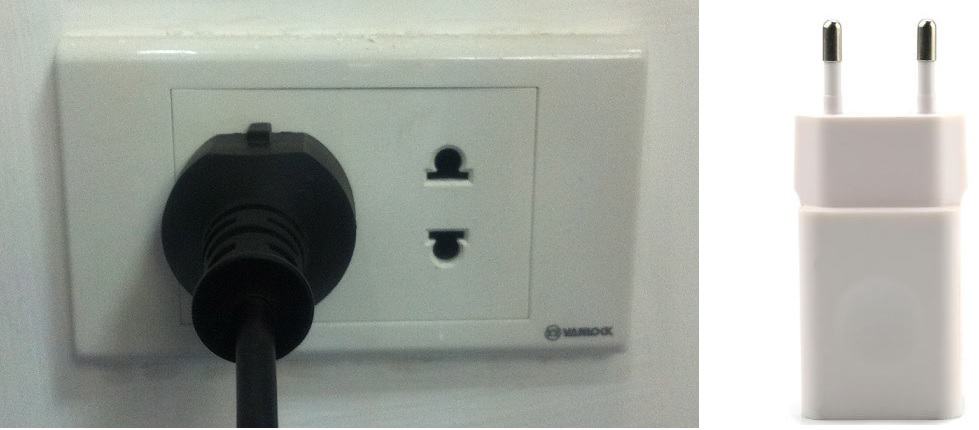
Most Vietnam power sockets support the type A plugs that are common in the United States, but not the ones with the 3rd prong used for grounding. Because of this, a three- to two-prong adapter is a good idea if you are bringing items with a three-prong plug. Vietnam sockets also support type C and F plugs, which both have two round prongs. Sometimes you will find sockets that accept type C and F plugs but not Type A, so you may want to bring a type A to type C adapter just in case.
Note: If you’re from the United States you’ll also need to make sure that your electronic equipment can run at 220 volts otherwise you will need a power transformer to use it in Vietnam. Plugging in a 110 volt device into a 220 volt socket will most likely cause the device to burn out.
Which Area of Each City Should I Stay In?
Each Vietnamese city has countless different neighborhoods that can cast a whole different light on your vacation if that is where you choose to stay. For this reason, the surrounding area is just as important as the amenities offered by the accommodation itself when you are deciding where to set up shop.
If you’re staying in a big city for more than 3 days we recommend that you try to stay in at least two different areas, that way, you will get a better feel for the urban diversity. Of course, some people prefer to eschew the hassle of moving around.
Recommended Neighborhoods
Saigon
- District 1 — Tourists who want to experience Saigon’s nightlife at its fullest will love this District. It has more bars, cheap restaurants, and English-language shops than anywhere else in the city. Most of it is open until late into the night. District 1 might be a bit loud or dirty for travelers not into that sort of atmosphere, though.
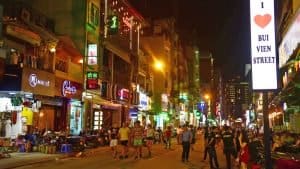
- District 3, near Da Kao — Although still close to all the main attractions, this district is much less touristy compared to District 1. There are still a fair amount of cool bars, coffee shops and restaurants around here, but they are decidedly classier and cleaner than those in District 1.
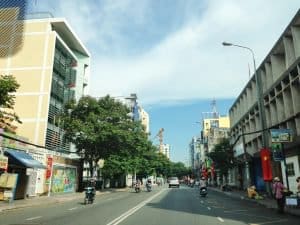
- District 4, near Vinh Khanh Street — District 4 is the street food capital of Saigon. Areas like Vinh Khanh or Xom Chieu are like carnival midways full of Vietnamese street eats. The district is very densely populated and it does not have many nice hotels, so finding a room on Airbnb or Couchsurfing is your best bet if you want to stay here.
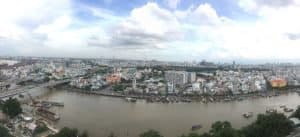
- District 5, near Cho Lon — A great area for those who love shopping and a genuine local experience. It’s not as modern as district 1 or as peaceful as district 3. It’s also not as close to most of the city’s tourist attractions. It’s authentically Vietnamese, though, and both the shopping and street food scenes are great.
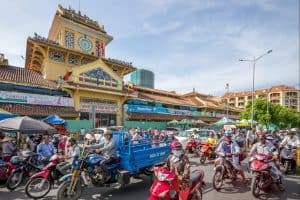
Danang
- Hai Chau Area, the city center — the town side, lies to the west of the Han river, which flows from south to north, ending in the Da Nang bay. It doesn’t have the beach town feel the city is famous for, but it has a lot of bars, street food, and all kinds of other opportunities for urban excitement.
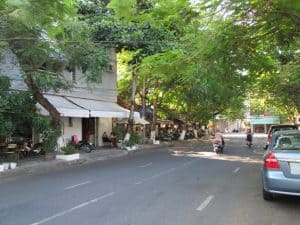
- My Khe, the Beachside — If you are in Danang to lay on the beach and swim in the ocean all day, this is a great neighborhood to stay in. It’s a long stretch of beach, starting just south of the Son Tra peninsula (also known as Monkey Mountain), down to the Non Nuoc beach where a dozen or so resorts congregates.
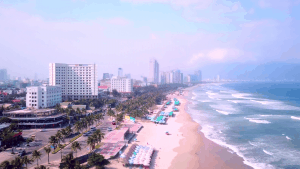
Hanoi
- Old Town, the street culture district — The most popular location for first-timers in Hanoi. The old Quarter is crowded, at times to a point of feeling claustrophobic. It is an excellent place to experience authentic urban Vietnam street culture, though. The food is delicious, the architecture is quaint, and there is just the right balance of English and Vietnamese spoken to make it feel manageable while still remaining immersive. Staying here can also be very affordable.
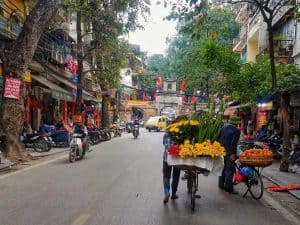
- Ba Dinh, near the Mausoleum — It’s quieter and cleaner than much of Hanoi, and it’s still close to a lot of points of interest, such as the Ho Chi Minh Mausoleum or the Presidential Palace. The dining options nearby are very good, although there is very little nightlife in close proximity.
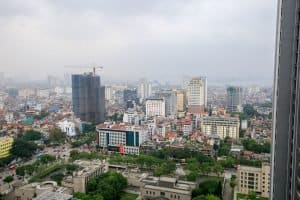
- Dong Da District, near Chua Boc — The student area of the city. It has lots of great street food and authentic local businesses. It’s also very cheap, which might appeal to travelers on a budget.
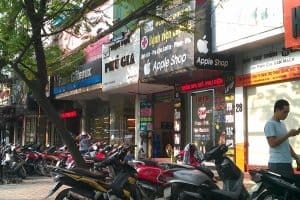
Nha Trang
- Tran Phu Beach — probably the most popular area in Nha Trang and by far the best place to stay if you like to be in the center of the action. It’s right on the beach with plenty of restaurants, great nightlife and a range of budget to high-end hotels and resorts.
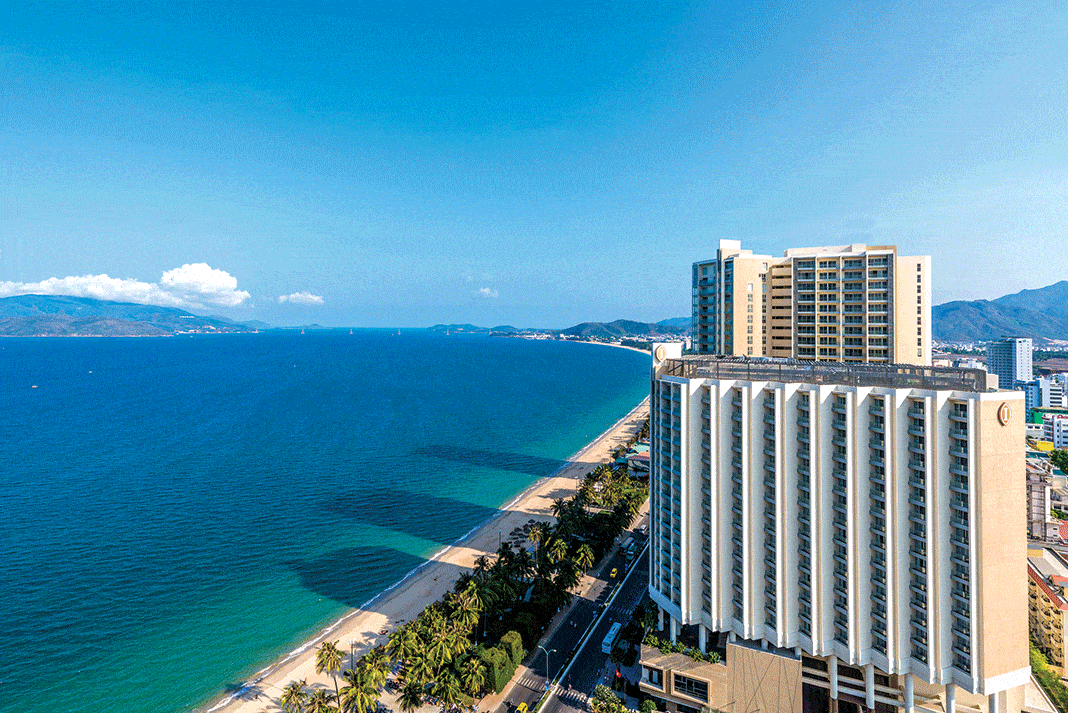
- Nha Trang Bay and Islands — Ninh Van Bay, Van Phong Bay, Whale Island, Hon Tre Island, and Hon Tam Island. This is a quieter area more for those who are looking for a peaceful beach getaway than a party. Great for families and for those with a higher budget.
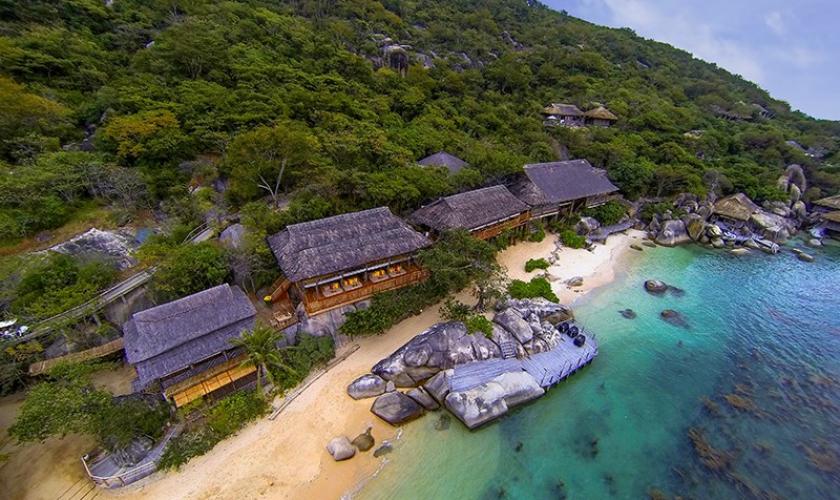
- Nha Trang City — lots of budget options and easy access to Nha Trang’s historical landmarks. Rent a bicycle and take yourself around the city. The beach is still within walking distance, about a 20min walk from the main tourist area.
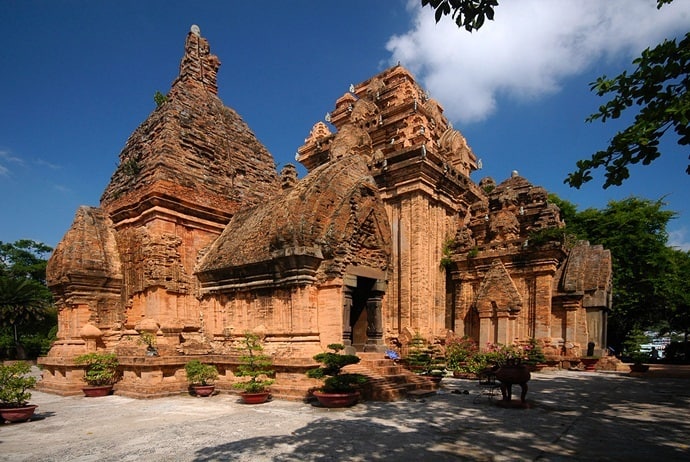
Hoi An
- Just outside the Old Town — staying inside the Old Town can be significantly pricier than choosing a hotel in another area. There are plenty of great places within walking distance. There are also more restaurants and street food options outside Old Town.
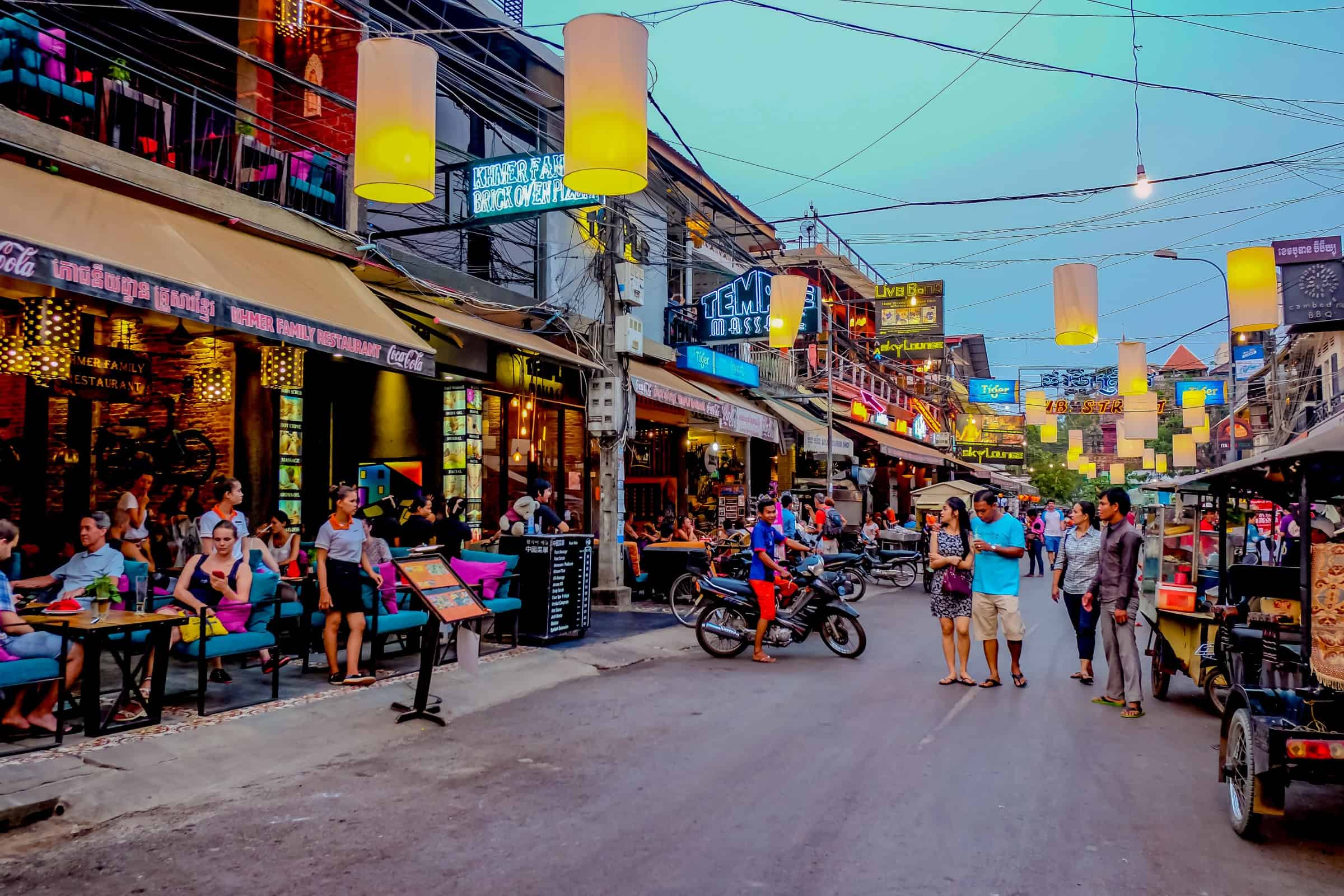
- Old Town — if you’re looking for the ultimate Hoi An experience and don’t mind dishing out a little more for the privilege then book yourself a few nights in the famous, romantic town-center. There aren’t many hotels inside the Old Town so book well in advance.
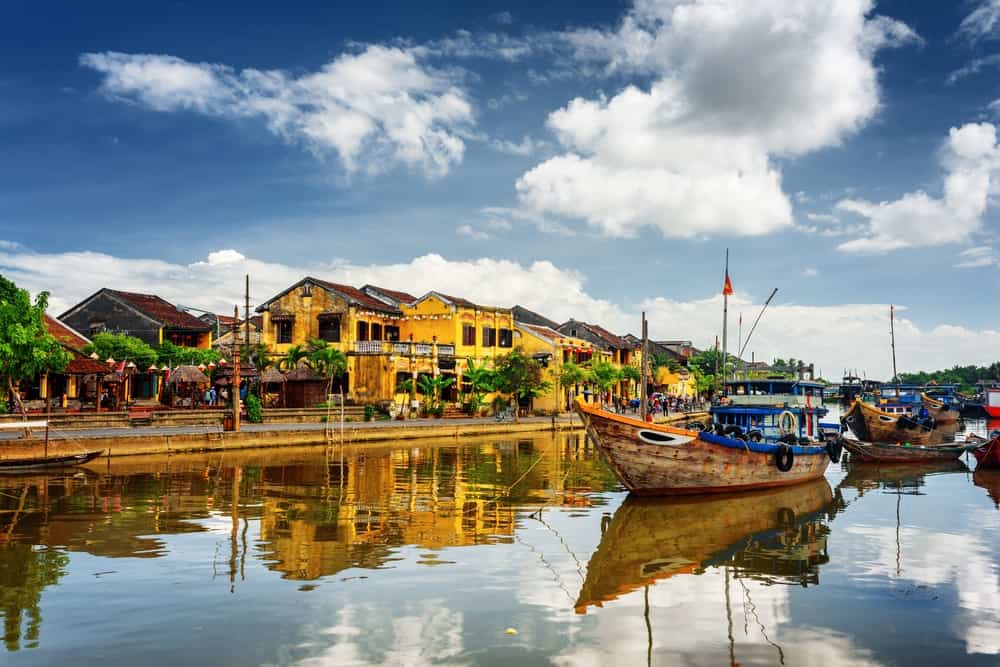
- Beaches and surrounding countryside — head just a little outside Hoi An and you will find plenty of beautiful resorts and home-stays offering a more relaxed, countryside or beach-side experience. Rent a bicycle and explore or cycle into town for the day.
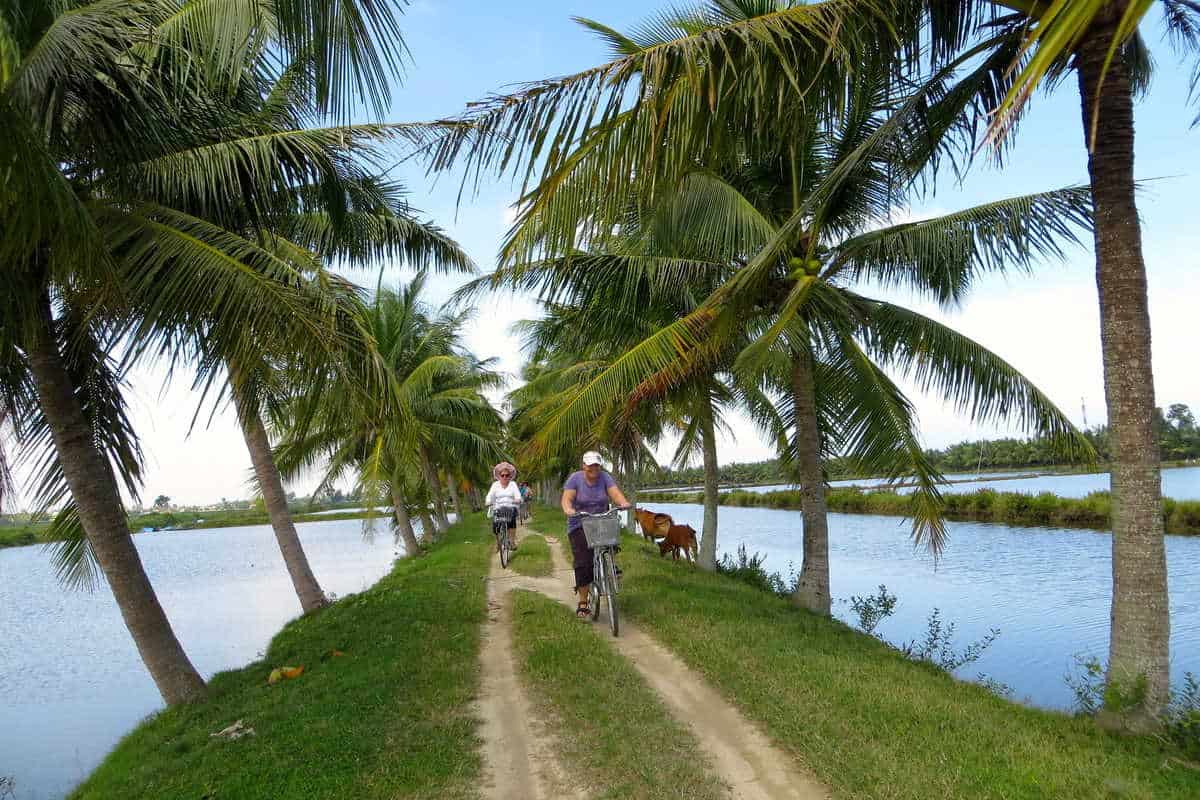
Phu Quoc
- Duong Dong — the main town in Phu Quoc, ideal for those who want a balance of beach, busy markets, nightlife, restaurants and all the conveniences of being in town. The Phu Quoc International Airport sits at the Northern end of town.
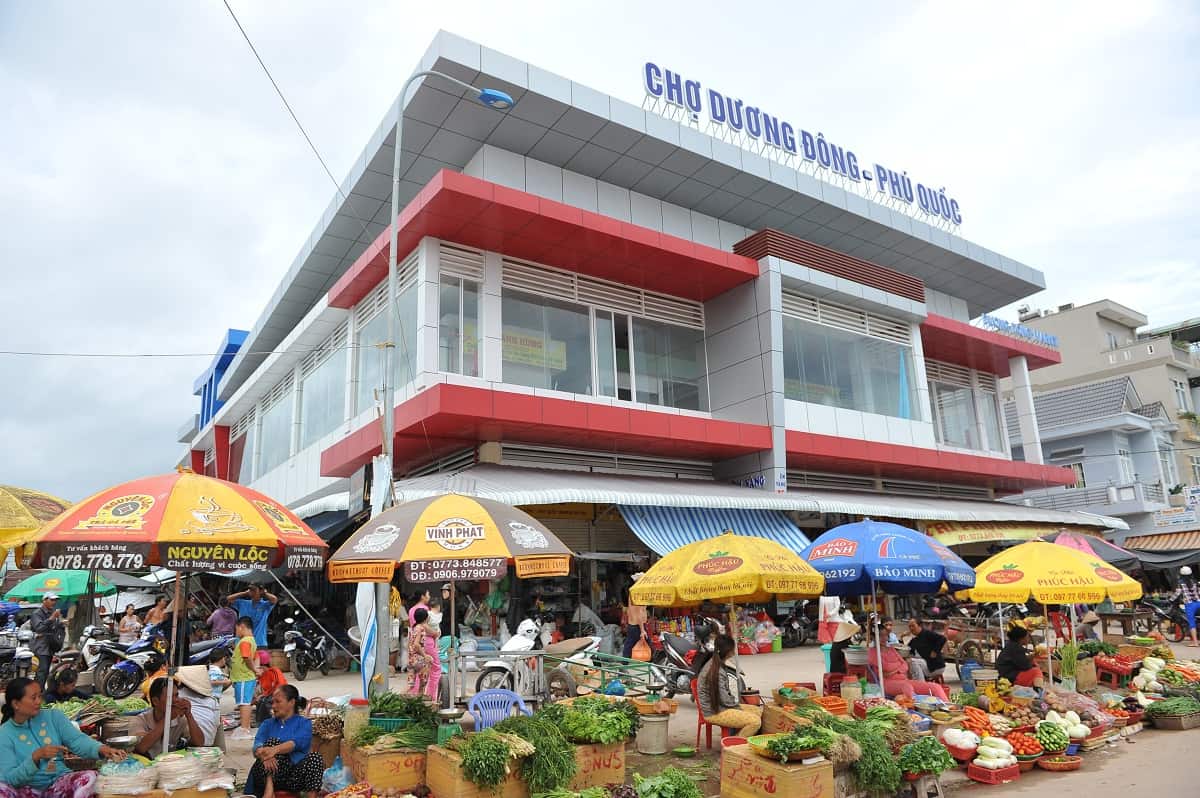
- Long Beach — the most popular beach in Phu Quoc, home to plenty of resorts, restaurants, bars and 20km of white sand and crystal clear water. It can get a little crowded and there’s less access to authentic local life but great for a beach holiday.
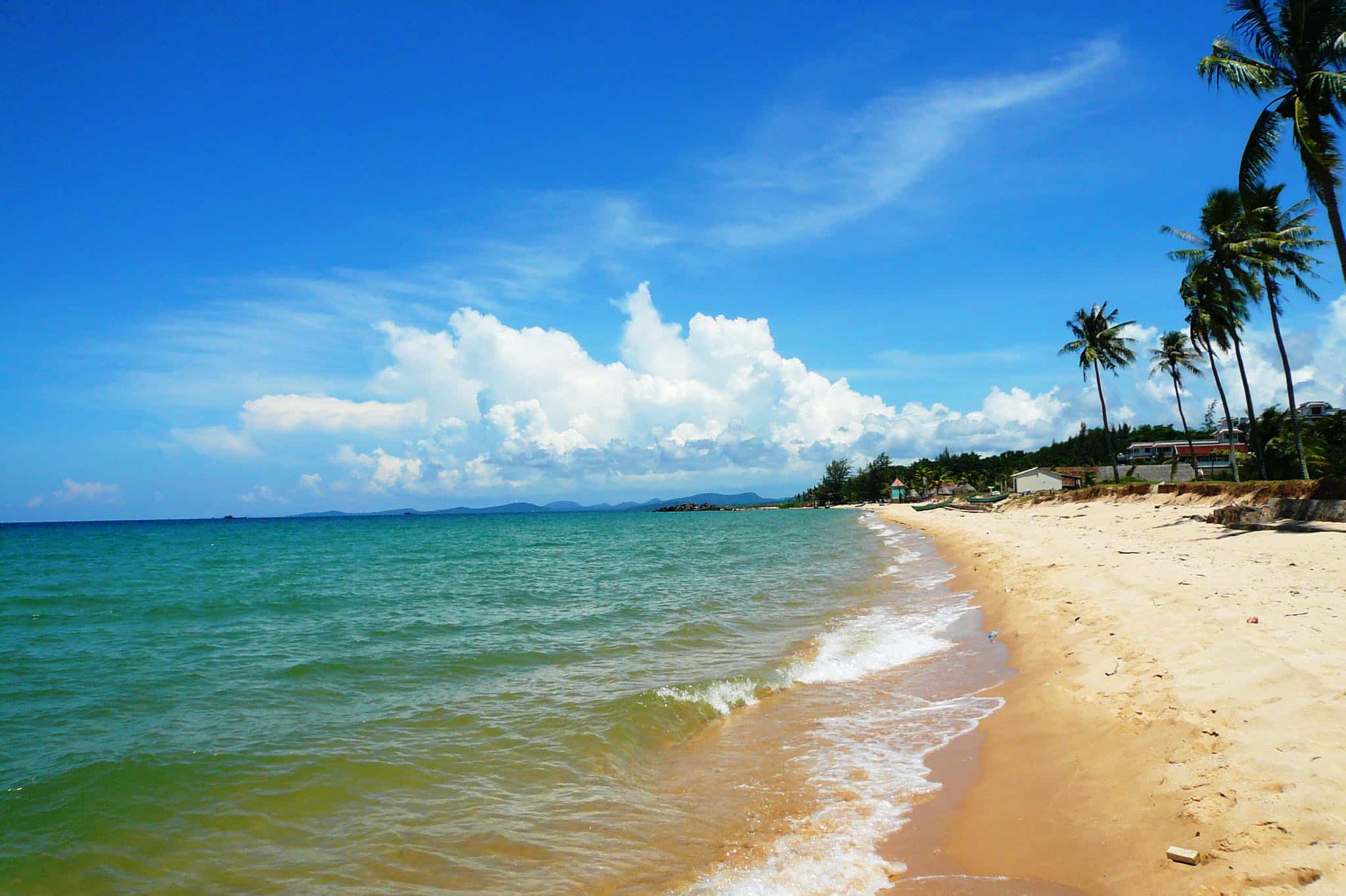
- Ong Lang Beach — ideal for those who are looking for a quiet escape. Think sunbathing, water sports and activities, day trips to off-shore islands, cocktails and sunsets over a strip of peaceful sand, etc. Nightlife is limited to hotel-owned bars and lounges.
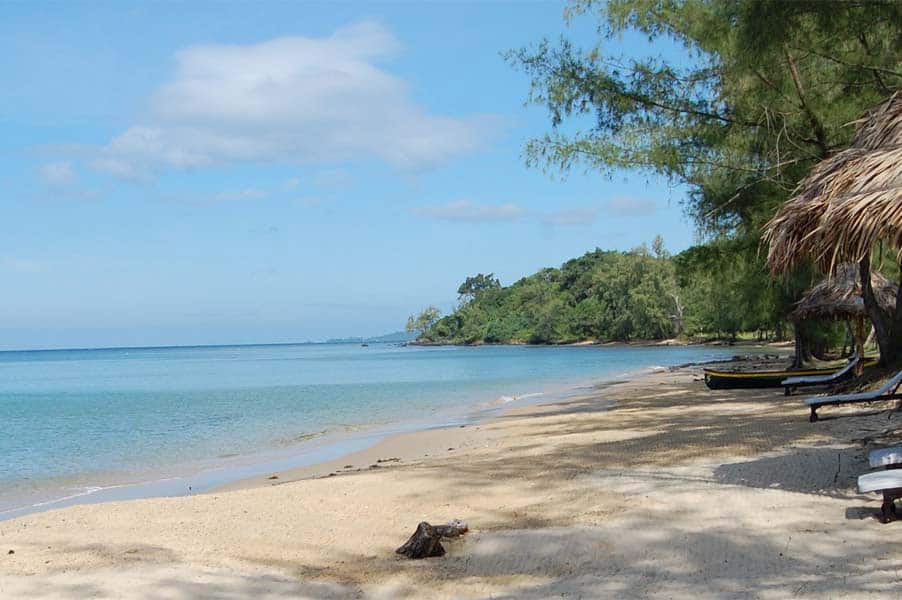
Can Tho
- Can Tho Town — this is the best part of town to stay in for easy access to local restaurants, bars and cafes, the Cai Rang floating market and a number of historical sites. Hai Ba Trung Street is the main tourist strip, running along the riverside. Rent a car or motorbike or take a taxi to explore further afield.
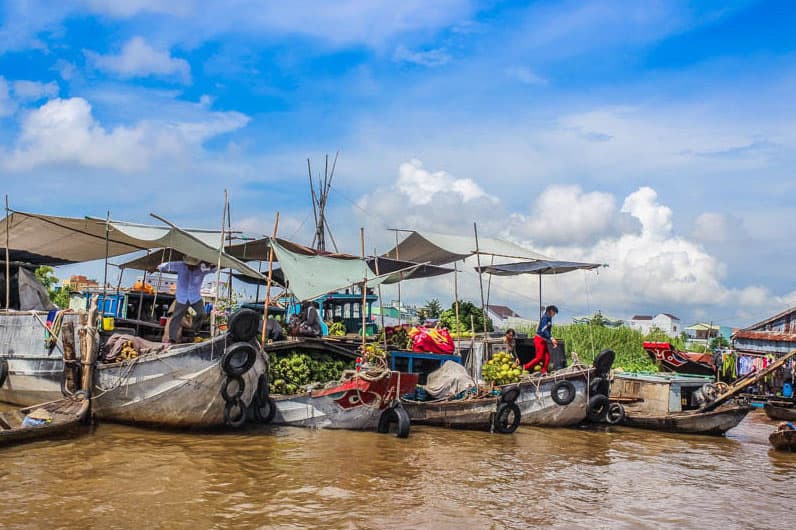
Finding Accommodation in Vietnam
Here are a few effective ways to find accommodation in Vietnamese cities, and several pros or cons of each.
Agoda, Booking.com, and other hotel sites
These sites are easy to use and reliable. They also have some quality control, so you are highly unlikely to find a dud on them. They can be a bit more expensive than other methods of finding hotels in Vietnam, though.
Airbnb, Couchsurfing, and other house-sharing sites
A great way to find affordable, comfortable accommodation. The big advantage house-sharing sites have over traditional booking sites is that they include rooms in apartments and guest houses in addition to hotels. This allows for a more authentic and often cozier experience. It also means a wider selection. Unfortunately, setting up booking can be a hassle. We’re heard of many Airbnb hosts in Vietnam cancelling on guests without much notice.
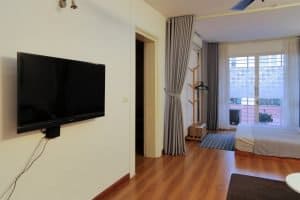
Finding hotels in person
There are 2- and 3-star hotels absolutely everywhere in Vietnamese cities. Hotels in Vietnam are almost always built tall and narrow, often occupying eight or so floors with just a few rooms on each. Unfortunately, very few of these local hotels are listed on any sites or apps, and booking them after you arrive might be risky. The hotel receptionists can generally speak a bit of English, but foreign guests are rare at the hotels and having things stolen out of your room is a distinct possibility. It’s probably best to stick to the road more often traveled in this case.
Phone and Data Plans
A working phone with a data plan is practically essential to a hassle-free trip to Vietnam. Being able to tap into the English-speaking world on the mobile internet at any time is a lifesaver in a crowded Vietnamese city. Being able to contact travel agents and folks back home on the go is huge, too. There are a few things you should know in order to get the most out of your phone.
What Type of Phone You Should Bring to Vietnam?
Some Western cell phones do not even have a slot to insert a SIM card. For your trip to Vietnam, make sure that your phone not only has an accessible SIM Card slot, but that it is also unlocked for international use. You may need to check with your local carrier to confirm this.
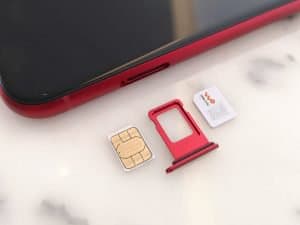
Getting a SIM Card in Vietnam
Although SIM Cards are sold throughout Vietnam, we recommend getting one at the airport when you first arrive so that you can contact someone immediately in case of an emergency. The 2 best mobile carriers in Vietnam are Viettel and Mobifone, so you should get a SIM card from one of these companies. You should find many kiosks selling SIM cards when you exit immigration. Make sure you get a SIM that includes data so that you can access the local 3G/4G service.
SIM cards in Vietnam are very cheap and you should be able to get a SIM card with prepaid data package for between 144,000 VND – 240,000 VND ($6 – $10) depending on your chosen data plan. Pay a few dollars more to add the ability to make local calls. If you find that your phone/data credit is running out during your trip, you can easily top off your credit.
For more detailed information about Vietnam phone usage, head over to our post on using a cell phone in Vietnam.
Must-Download Apps for Vietnam
In the table below, we’ve listed several apps that will make your trip to Vietnam easier and more enjoyable. All these apps have great user interfaces. We recommend finding a spot with Wi-Fi once you arrive in Vietnam and downloading them all at once. It’s also worth noting that free Wi-Fi is very common in Vietnamese cities.
| Name | Category | Notes |
|---|---|---|
| Grab | Transportation | Grab is the largest ride-hailing app in Vietnam. Read more information in the Transportation section of this guide. |
| Google Maps | Navigation | Google Maps works just in Vietnam just as well as anywhere. |
| Google Translate | Communication | Being able to understand or be understood by locals is a lifesaver. |
| Social Networking | Everything is on Facebook in Vietnam. Most businesses use it as their main web presence, and you can reach out to anyone on there while on the go. |
[BACK TO CONTENTS]
Where to Exchange Money in Vietnam
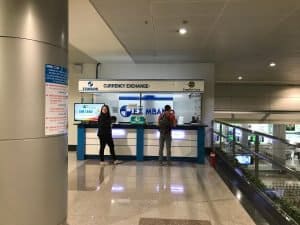
There are a few options for exchanging money from your country’s currency to VND in Vietnam.
-
- Airport currency exchanges — There are lots of money exchange counters at all international airports in Vietnam. Most of them offer fairly good exchange rates, however the rates at money exchanges outside the airport should be a bit better so we would not recommend changing all your money at the airport.
-
- Banks — Most banks will exchange between any major currencies and VND. They offer pretty good rates, too. The bills need to be pristine, however. Tears or scuffs on the bills will exclude them from being exchanged at banks.
-
- Jewelry shops — There are money exchanges operating out of gold and jewelry shops throughout the city. The rates offered are usually as good or better than you would get at a bank, and the shops are more lenient on the policy of not accepting tarnished bills. You also don’t need to provide your passport to exchange money like you do at banks.
Exchange Rates
| 1 AUD = 16,967 VND |
| VND | AUD |
|---|---|
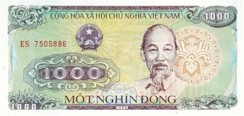 1,000
1,000
|
0.058 |
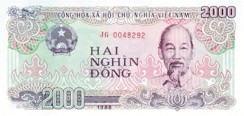 2,000
2,000
|
0.11 |
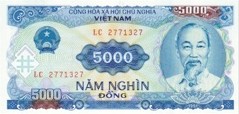 5,000
5,000
|
0.29 |
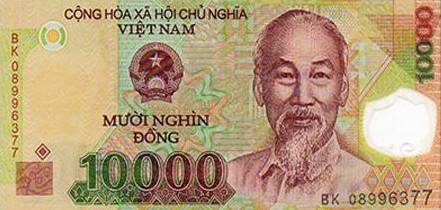 10,000
10,000
|
0.58 |
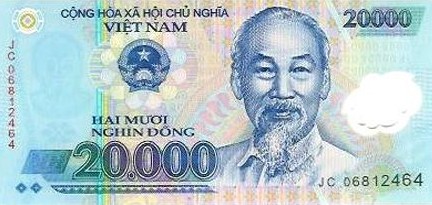 20,000
20,000
|
1.17 |
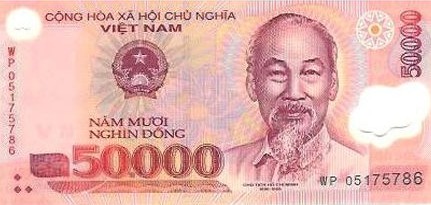 50,000
50,000
|
2.94 |
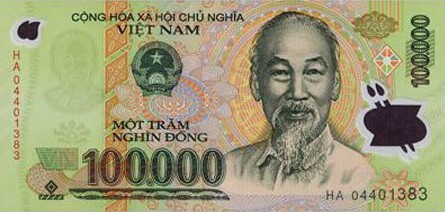 100,000
100,000
|
5.89 |
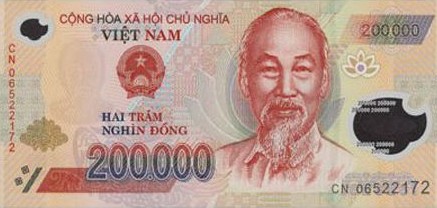 200,000
200,000
|
11.78 |
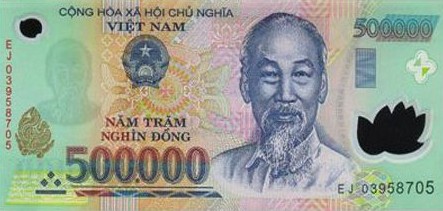 500,000
500,000
|
29.46 |
Australian travelers should save the conversion rate table shown above as a background image on their phone and use it as a quick reference when paying for things in Vietnam. Rates are updated daily.
To access the most up to date Vietnamese Dong conversion rate tables for the US Dollar (USD), Australian Dollar (AUD), British Pound (GBP), Euro (EUR), Canadian Dollar (CAD), New Zealand Dollar (NZD), Singapore Dollar (SGD), Chinese Yuan (CNY), Korean Won (KRW) and Japanese Yen (JPY) please click on the link below:
Vietnamese Dong Conversion Rate Tables for USD, AUD, GBP, EUR, SGD, CNY, KRW, JPY
Note: We would highly recommend that you wait until you arrive in Vietnam to exchange your currency to Vietnamese Dong as the rate you receive in your home country will almost certainly be much worse than the rates you will get once you arrive in Vietnam.
What to Expect When Your Plane Lands in Vietnam
The time between touching down on the runway and getting to your accommodation door is often the most stressful part of a trip and this is especially true after an international flight. To help ease your worries, here is a step-by-step rundown of how to go about it.
Heading To Immigration
Your first stop after getting off the plane is either the visa on arrival counter (for sponsored tourist) or the immigration lines, which are located in the same large room. If you have an E-Visa or Embassy Visa go straight to the immigration lines. If you have a visa on arrival letter, you will need to go to the Visa on Arrival Counter and do the following:
- Fill out a form supplied at the counter, complete with a passport photo. If you forgot to bring a photo, airport staff will take one for a small fee.
- Give the completed form, your visa letter, your passport, and a stamping fee to the visa clerk.
- Wait a bit (usually about 20 minutes).
- Receive your stamped passport and continue to the immigration lines.
Once you’re in one of the immigration lines, wait until you are upfront. Immigration will examine your visa and will hopefully wave you through without a hitch. The entire process may take anywhere from 15 minutes to 2 hours, depending on how prepared you came and if the airport is busy.
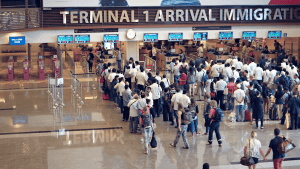
Proceed to the baggage claims, which are just after immigration. Locate your baggage carousel and wait for your bags. After picking them up, take them through the customs archway. You may have to put your bags on an x-ray conveyor belt as you go through, although oftentimes there is no one at customs to enforce this rule.
After customs, you will be met with a large room full of money exchanges, SIM card sellers, and taxi providers. For more info about SIMs and money exchange, read the sections above. For more info about taxis from the airport, read on.
Getting a Taxi from the Airport to your Accommodation
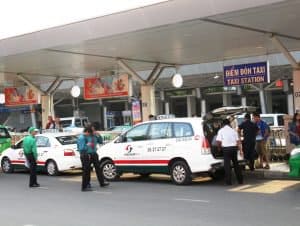
The first taxi ride you take in Vietnam (from the airport) has different rules than other taxi rides. Only cars and buses are allowed into the terminals so you won’t be able to get a Grab bike or motorbike taxi from inside the airport even if you are packing light.
The taxi providers operating in the room located just before you exit the airport are excellent choices for your ride. The vendors have a well-oiled system going, and you are much less likely to be overcharged by one of them than if you try to get a taxi driver outside. They will often charge a flat fee for a taxi to anywhere in the city. At these stands, payment for the ride will occur before you even get in the taxi. They will also give you a paper to write your name, your hotel address, and your email — they understand airport transfers are stressful and they want to be able to contact you in case you leave anything in the taxi.
After taking your info and your money, the stand attendant will lead you outside to a waiting taxi driver. The two will help you load your bags into the taxi, and you’re off.
If you don’t want to buy a prepaid taxi voucher, the table below will help you calculate how much you should be paying in various cities for your trip from the airport to the city center and for other trips. The prices are approximate, and they apply to the “safe” brands of public taxi in each city.
| City | Airport-City Center | Initial Cost (When You Get In) | Each Additional Kilometer |
|---|---|---|---|
| Hanoi | 320k (14 USD) | 10k | 11k |
| Saigon | 170k (8 USD) | 12k | 13k |
| Hoi An | 390k (17 USD) | 16k | 15k |
| Danang | 90k (4 USD) | 9k | 10k |
| Nha Trang | 220k (10 USD) | 14k | 14k |
Note 1: The taxi driver may ask you to pay for tolls during the ride. There is a toll booth when leaving the airport parking lot in Hanoi and Ho Chi Minh City, and there may be one or two more if you are traveling to your hotel on the highway. The tolls will not be much (around 10,000 VND for the airport toll), but you are expected to pay them. If it makes you more comfortable, work out the tolls with the attendant before leaving the airport.
Note 2: Due to the high competition in Hoi An, private car transfers from Danang to Hoi An (and vice versa) are usually much cheaper than taking a taxi, starting at around 250,000 VND each way.
If you are worried about waiting until you arrive in Vietnam to book an airport transfer or taxi you might consider using a company called Hanoi Transfer Service. Despite the company name, they also provide transfers in Ho Chi Minh City and Danang, and their rates are very competitive. You can prebook your transfers with Hanoi Transfer Service using the link below:
https://www.hanoitransferservice.com/
How to Stay Safe in Vietnam
Contrary to popular belief, Vietnam is not dangerous compared to most developing countries, neither in terms of sickness or crime, for travelers who are prepared. Still, safety always comes first, so it’s certainly a good idea to do some reading on it.
In terms of crime, Vietnam is very safe. Its violent crime levels are extremely low. Non-violent crimes such as pickpocketing are more common, although still not as bad as in many third world countries.
You will often hear of first time travelers to Vietnam being victims of crime. The main reason for this is likely a lack of vigilance and information. So that you don’t befall the same fate, we’ve provided a few tips below to help you avoid becoming a victim.
- Don’t use your phone out in the open — If you must use your phone while outdoors, hold it using both hands, put your back against a wall and face the street so you will be aware if anyone drives up close to you. In other words, make sure no one would be able to run or drive by and snatch your phone from your hands.
- Don’t flash your valuables— Don’t walk around the street wearing gold jewelry or other obvious signs of wealth. And don’t flash your cash unless you need to buy something with it.
- Only carry the cash you need— Budget yourself for each day and only leave your hotel with the amount of cash you think you’ll need. Better yet, carry a no-fee ATM card – see the “ATMs” section of this guide.
For more details about how to stay safe in Vietnam, see our article on safety for solo female travelers in Vietnam. The article is mainly about protecting oneself from crime, and most of the information applies to anyone, regardless of gender or with whom they are traveling.
Avoiding Scams in Vietnam
If you don’t look like an experienced traveler, you will probably be targeted by scammers in Vietnam. However, that doesn’t mean you have to be a victim. We have written a couple of articles that will help you protect yourself against common scams in North Vietnam and common scams in the South. If you follow the advice in these 2 articles and the infographic below, you should leave Vietnam with all your money and valuables intact!
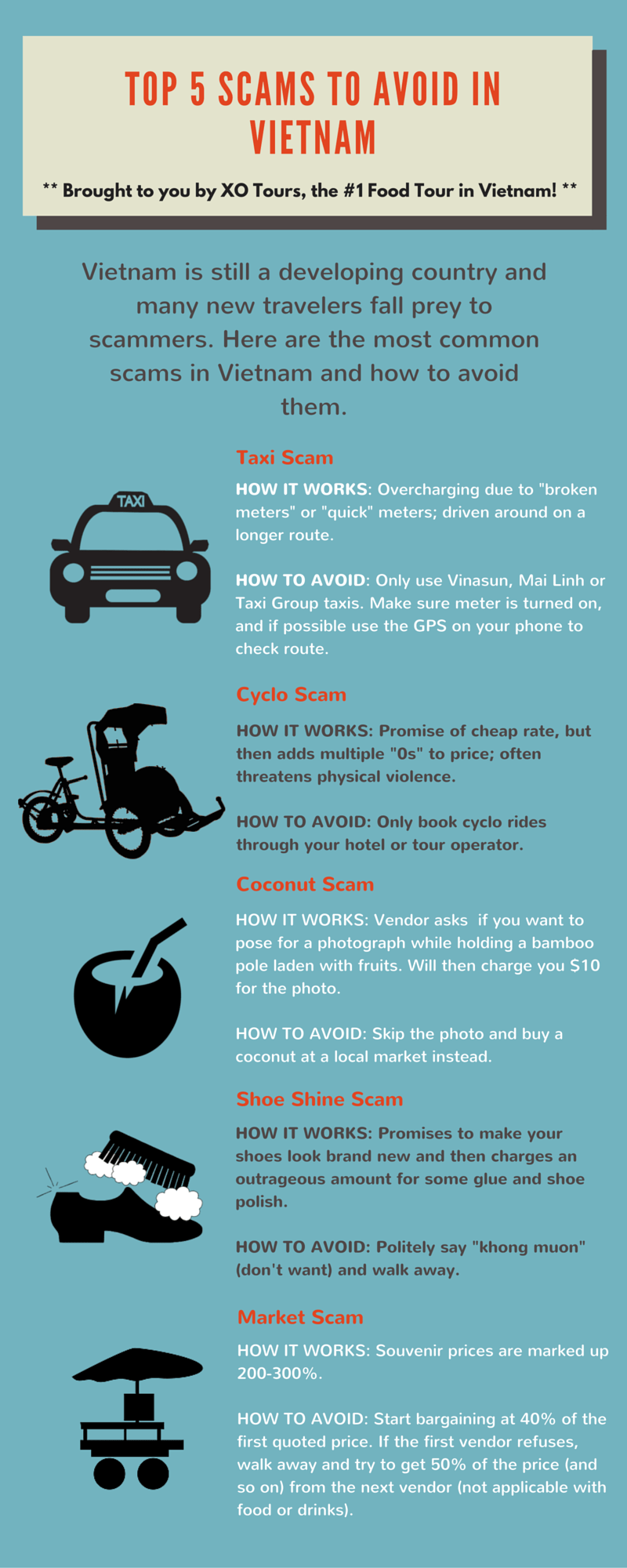
How do I Avoid Getting Sick in Vietnam?
One of the first things people think about when contemplating a trip to Vietnam is sickness and it’s true that it is fairly easy for travelers in Vietnam to get sick if they don’t take the proper safety measures. By doing a bit of research, though, you will severely lessen your chances of experiencing health problems on your trip. Below, we’ve attempted to distill that research into a shortlist.
Buy a quality mask and wear it in the big cities
Almost all physical health problems start with the immune system. If someone’s immune system is weak enough, they are more likely to get sick. One of the quickest ways to lower your immune system’s defenses in Vietnam is to constantly breathe the heavily polluted city air. To avoid doing so, you should buy a quality face mask. We’re not talking about one of the ones sold on the side of the road for $0.50, but an N95 rated mask that will not only help filter out dust but also tiny pollutants that can infiltrate regular face masks. It’s not feasible to wear these masks during your entire trip however, but you might consider wearing them outdoors during periods of peak traffic and around large crowds.
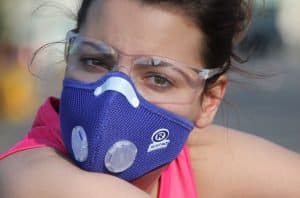
Don’t hang around in the rain
Another way to weaken your immune system is to spend a lot of time in cold, wet environments. If you are visiting Vietnam during the rainy season, this will be especially applicable to your trip.
The rain in Hanoi and Saigon can be as dirty as the air, so if you have to be in the rain, make sure you are wearing a high-quality poncho or rain jacket. You may want to duck into a cafe during the flash-downpours common in Vietnam’s wet season.
Follow our street food guidance
Street food is one of the most famous parts of Vietnam’s tourism scene. But unfortunately, the fact is that some street food can be unhygienic.
Read our blog post on street food safety and other ways to stay healthy in Vietnam to learn how you can protect yourself from sickness while having a street food adventure.
Be careful with water
Water and ice cubes served in restaurants is safe 95% of the time. In general, you should not drink tap water however, it should be perfectly safe for you to brush your teeth and consume drinks with ice. We would be more cautious about consuming water and ice in the smaller cities however due to poorer water filtration systems. For more information about safety regarding drinking water in Vietnam, read over the “water” section of the safety article linked to above.

Medical Centers and Emergencies
Most people don’t find themselves in need of a doctor while travelling through Vietnam but it’s always good to have a backup plan in place in case something should go wrong. Step number one is insurance – make sure you are fully covered before you get on the plane. Here are a few tips for what to do, where to get help and the steps to take in an emergency.
What are the key helplines in Vietnam?
There are a few numbers you could keep about your person while traveling through Vietnam just to be safe.
| Ambulance | Call 115 |
| Police | Call 113 |
| Fire | Call 114 |
| Emergency Hotlines for Individual Hospitals | This is often a better option than the national ambulance number as you have control over which hospital you contact. We’ve recommended a few hospitals in each major city below. |
| Embassy Number | Take note of your embassy’s hotline while travelling in Vietnam. Some countries have embassies and consulates in several Vietnamese cities. |
| Insurance Hotline | Keep your insurance company’s contact details handy. |
Where should I go in an emergency?
The good news is that there are many top-quality international and local hospitals and clinics in Vietnam so if you do find yourself in need of urgent assistance, you do have options. Here are our recommendations for each city. If you are in need of help while visiting Hoi An, your best option is probably to head to Da Nang, about an hour’s drive away.
| Hanoi | Hanoi French Hospital, International SOS, VINMEC International hospital |
| Ho Chi Minh City | FV Hospital, International SOS, Victoria Healthcare, Hanh Phuc Hospital |
| Da Nang and Hoi An | Hoan My Da Nang Hospital, Family Hospital Da Nang |
| Nha Trang | Vinmec International Hospital |
Other Useful Clinics
There are a range of other clinics and specialists in Vietnam, mainly in Ho Chi Minh City and Hanoi, from dentists and ophthalmologist to osteopaths and acupuncture specialists. There are many opticians in all three cities and other smaller cities around the country but ophthalmological care is harder to find. Here are a few of our most recommended clinics in each city.
Hanoi
| Dental | One Dental Clinic, West Coast International Dental Clinic |
| Eye Care | Japan International Eye Hospital, Ophthalmology branch of Hanoi French Hospital |
| Vaccinations | Vabiotech or most major international hospitals |
Ho Chi Minh City
| Dental | Nha Khoa Van Hanh (checkups), Nha Khoa 2000 (checkups), Starlight Dental, West Coast International Dental Clinic |
| Eye Care | European Eye Center, American Eye Center |
| Vaccinations | Pasteur Institute or most major international hospitals |
Top Tips for Dealing with Medical Emergencies in Vietnam
Aside from knowing your helplines and hospitals, there are a few insider tips you might want to use in order to keep your expenses as low as possible, fast-track things as much as possible and minimize your risk.
-
- Don’t buy your medication at the hospital
While the medication you can buy at the hospital is usually top-brand, quality stuff, it is also usually very overpriced. It can be a better idea to buy the same good brands but at more local pharmacies. If you’ve been prescribed basic painkillers, antibiotics and other fairly common medication, try Pharmacity – a big chain of pharmacies across Ho Chi Minh City and Hanoi. If you’re in need of something more niche such as antiepileptics, you may end up having to buy them at the hospital but there are a few places outside that you could try first. in HCMC try the pharmacies on Nguyễn Chí Thanh opposite Cho Ray Hospital and in Hanoi try Phuong Mai st, in Dong Da district. Right in front of the French Hospital, it is harder to find less common medication in Da Nang. Dong Giang pharmacy on 32 Nguyễn Văn Thoại is a possible option or Nha Thuoc Hong Duc in Hai Chau.
-
- Check the medicine you’ve been prescribed before you buy it
It is quite common to come away from a hospital visit with an alarmingly long prescription but take a closer look and you may find that a large proportion of the drugs prescribed are painkillers, antihistamines, nasal decongestants and the like. You may already have these with you or you may choose not to use them depending on your sickness or injury. Otherwise, they are readily available and far cheaper at local pharmacies.
-
- Know how your insurance works before you need it
You should make sure you have a clear understanding of how to use your insurance if it comes to it. For example, does your company pay upfront in an emergency or are you expected to cover expenses and claim later? Does your policy offer an evacuation service? What is the procedure for getting help should you need it?
-
- Keep your medical information handy at all times
As noted above, it’s unlikely that you’re going to need medical help in Vietnam but it’s better to be safe than sorry! Just in case, keep a record of your vaccination status, any allergies to medicine or other things, your health insurance policy number and their contact number, and your blood type. Put it in your day pack or your wallet rather than leaving it back at the hotel.
-
- Prevention is always better than a cure
Why put yourself through the stress and pain of being in medical distress if you don’t have to? Here are some tips for preventing an emergency in the first place.
– Invest in a good helmet if you ride a motorbike and be sure to wear proper boots, not flip-flops or sandals. Good, certified helmet brands in Vietnam include: Andes, Biker Saigon (HCMC); Oasis Da Nang Helmets & more, Ber Shop (Danang); Motor Store, Huyen Anh Shop GRS helmet (Hanoi).
– Cover up against the sun and/or wear sunscreen, particularly during the hotter times of the year. Most local people in Vietnam cover themselves carefully when they go outside and while this is partly a cultural choice, it is also for the sake of skin safety and avoiding heatstroke. Wear long, loose-fitting clothing and a hat wherever possible.
– Stay hydrated! A bit of an obvious one but seriously, make sure you drink enough and if in doubt buy yourself some electrolytes from any local pharmacy.
– Invest in some mosquito repellent and make sure you use it in rural areas, as they are more prone to have mosquito problems. If the accommodation you booked is in a location with a lot of mosquitoes (read reviews), make sure they provide mosquito nets. Bites are itchy and annoying, and in rural areas mosquitoes can carry disease.
Shopping in Vietnam
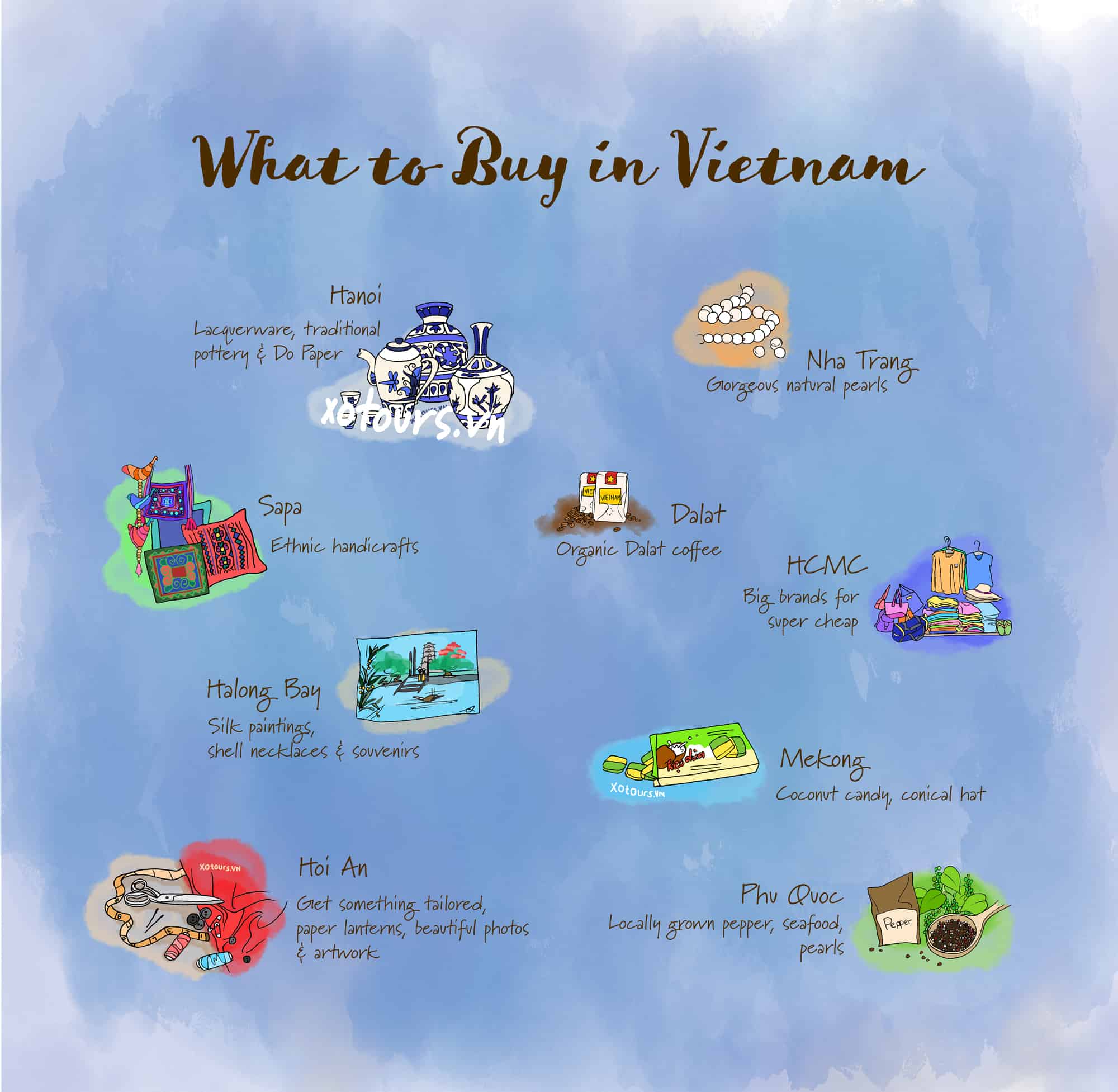
Shopping is at the top of many people’s list when they travel to Vietnam. Handmade goods are easy to come by, the products on offer are often exotic and exciting to Western buyers, as we mentioned in the “money” section of this guide, most domestically-produced products are very cheap, and buying souvenirs for yourself and loved ones can be a fun part of the travel experience.
In general we feel that Saigon offers the best shopping opportunities in Vietnam due to the large number of local markets. Each city in Vietnam sells unique items that might not be available in other cities however, so if you find something you really love, we would recommend buying it rather than waiting to buy it in another city because you may not find it again.
If you’re a clothes horse and you’re looking for more than just cheap t-shirts or wraps, you might consider getting clothes tailored in Hoi An. Custom tailoring in Vietnam is very affordable and will still be cheaper than name-brand clothing back home. If you have an old piece of clothing that you really love, you can even bring it to the tailors in Vietnam to make a virtually identical copy.
For more specific advice about tailoring in Hoi An, click on the link below:
Where to Shop in Vietnam
Vietnam is officially a communist country. Economically, though, its major cities are as capitalist as it gets. This means some fantastic shopping opportunities. Both world-class indoor shopping malls and quirky, incredibly inexpensive local markets are everywhere in the large cities. We’ve put together some recommended shopping locations in Saigon, Hoi An, and Hanoi in the table below.
| City | Venue Name | Main Item Type | Notes |
|---|---|---|---|
| Saigon | Saigon Square | Clothing, bags, watches, etc. | Huge variety, good prices. |
| Russian Market | Cold-weather clothes to bring home | The high supply-low demand for warm clothing in Vietnam means great deals. | |
| An Dong Market | Food and gifts | Inexpensive with a huge variety of goods. | |
| Luu Van Lang Street | Shoes (all types) | An amazing selection for even better prices. | |
| Hoi An | Tailors’ Market | Custom clothing and suits | The finest tailoring in Vietnam. Best visited in early morning. |
| Hoi An Old Town | Leathers and silk | Real leather is hard to find in Vietnam, but not here. | |
| Dori Shop | Cold-weather clothing and luggage | See the section on North Face below. | |
| Hanoi | Hang Da Market | Upscale goods | A traditional market with a classy twist. |
| Hang Gai Street | Silk goods | The silk selection may be better than anywhere in Vietnam. | |
| Trang Tien Plaza | Designer goods | The ripoffs are clearly marked as such when they are sold. |
“Wet Markets” are the name given to Vietnam’s local markets, most of which are either outdoors or have an open-air setting. They are called “wet” because they are cleaned at noon and at the end of the day by being sprayed down with a hose.
Wet Markets are a good place to buy useful souvenirs, household goods, fresh food, cheap clothes, and a myriad of other local goods. They are scattered throughout every town in Vietnam, whether urban or rural.
It’s not recommended to buy electronics in Vietnam. They are usually more expensive than in Western countries since they have to be imported and the government taxes them heavily. The domestically produced electronics are very inexpensive, but they are nearly always of very low quality.
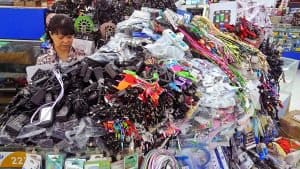
Buying North Face Jackets and Gear in Vietnam
North Face clothing, in particular, is a very popular shopping choice for travelers visiting Vietnam. The table above suggests cold-weather clothing stores in Saigon and Hoi An, both of which offer North Face and since Northern Vietnam gets so cold part of the year, almost all high-end clothing markets stock them. The thing is, the $40 versions you find in Vietnam are not really North Face. They are knockoffs. Discussions about them online are unanimous, though, in agreeing that the quality North Face knockoffs in Vietnam are indistinguishable from the genuine product, and they work just as well. I have even heard stories of clerks in real North Face stores not being able to tell these imitations from the authentic version.
Buying Gifts in Vietnam
In Vietnamese cities, souvenir shops are located nearly everywhere a tourist might wander. But what kind of gifts are sold, and where should you get them?
What Kind of Souvenirs Do They Sell in Vietnam?
Listed below are the common types of things you can expect to see at tourists markets:
- Decorative chopstick boxes with chopsticks
- Plastic figurines made to look like marble or jade
- Wooden figures of zodiac symbols or Vietnamese women in traditional dress
- Ceramic plates decorated with images of Vietnam
- Glass or wooden tea sets
- Paper Lanterns
- Inexpensive Vietnam t-shirts
- Inexpensive Vietnam bags
- Vietnam war propaganda prints
- Silk scarves
Good markets or areas to get these sorts of things in Vietnam are listed in the following table.
| City | Venue |
|---|---|
| Saigon | Ben Thanh Market (plus night market) |
| An Dong Market (top floor) | |
| Saigon Square | |
| Hoi An | Hoi An Night Market (near An Hoi bridge) |
| Danang | Danang Souvenirs and Cafe |
| Hanoi | Dong Xuan Market (plus night market) |
| Ho Chi Minh mausoleum souvenir shops | |
| Hanoi Old Quarter |
How to Bargain in Tourist Markets
If you are planning to do some shopping at the tourist markets in Vietnam, you’ll definitely want to learn a bit about bargaining. Market vendors will often give a high price when asked how much something costs, and it is the customer’s job to haggle them down to something lower. They do the same thing with local and foreign customers, although they generally quote an even higher initial price to foreigners. But if you know a bit about how bargaining works and can remember a few key Vietnamese bargaining terms, you can avoid being overcharged.

Here are a few quick bargaining tips:
- Be friendly but firm — Do not be afraid of coming off as rude or offensive during the bargaining process. Most western countries have a culture of politeness that Vietnam does not. For example, a Vietnamese vendor will not hesitate to ask “if you don’t want to pay $10 for this, what do you want to pay? $9?” If you’re not interested, don’t be afraid to say “Không mua” and walk away.
- Go For 30% — If you’re okay with paying 50% of the initially quoted price, propose a 70% discount. Keep countering their offers until you can get them down to 50%. Please note that the 30% rule only applies to the large touristy markets like Ben Thanh in Ho Chi Minh City. The markets located outside the main tourist areas offer less leeway for bargaining.
- Ask for bulk — If you’re interested in buying more than one item from a vendor, ask for a bulk discount.
- Try the ‘walk-away’ — If the vendor refuses to go any lower on the price, try turning to walk away. This will often result in the vendor having a sudden change of heart.
- Use a bit of Vietnamese — We’ve found bargaining works infinitely better for those who learn just a few key Vietnamese phrases. Many travelers panic when they contemplate learning any Vietnamese because the language can look a bit imposing. Bargaining is an area where learning just a few simple phrases can go a very long way. We’ve listed a few useful terms to know in the table below. You’ll also need to know how to say numbers in Vietnamese, but they are easy to learn. A good summary of how to count in Vietnamese can be found at Omniglot.
| English Term | Vietnamese Translation |
|---|---|
| How much? | Bao nhiêu anh/chị? |
| Discount it for me. | Bớt đi. |
| (Amount), is that okay? | [$$], được không? |
| Too expensive. | Mắc quá. |
| Cheaper. | Rẻ hơn. |
| I want to buy this | Muốn mua cái này. |
In our experience, vendors will not start at such a ridiculously high initial asking price if you use Vietnamese. So don’t be surprised if you do and the vendor refuses to go down to a much lower price — it’s because you’re already being quoted the price given to locals.
Where to Eat in Vietnam
Vietnam’s dining out scene is so varied and so intricate that an entire encyclopedia would be needed to fill you in on everything there is to know about it. Luckily, the XO blog is just that: a huge compendium focusing mainly on eating outside in Vietnam.
The pages linked below will serve as an excellent primer for those who want to learn more about the subject from an insider.
- Street Food Culture
- Avoiding Gluten, Dairy, and Other Allergens
- Food Safety
- How Obama and Bourdain’s Vietnam Visit Helped Ignite Tourism
Finding Food Yourself
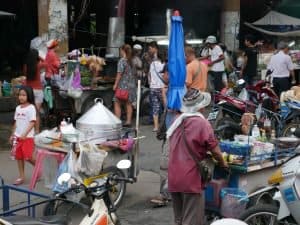
Foraging for street food is a quintessential urban Vietnamese experience. Striking out on foot and simply roaming the lively sidewalks until you spot a street food stall that tickles your fancy is entertaining, culturally immersive, and satisfying. The one piece of advice to follow here is to stick to the places already attracting a crowd. For reasons explained in our article on Vietnam’s rich street food culture, crowded street food vendors nearly always mean better food and less health risk.
For specific recommendations of where to go and what to eat in Saigon and Hanoi, click on the links below:
25 Must-Eat Dishes in Saigon (and Where To Try Them)
The 25 Best Hanoi Restaurants and Street Food Stalls
For approximate street food prices, see the table in the “how much do things cost?” section of this guide.
Street Food Tours in Vietnam
A good way to get started on a city’s street food scene is to book a street food tour. Food tourism is extremely popular in Vietnam and most cities have a variety of tour operators that provide food tours. We would recommend sticking with the established tour operators who have better-trained tour guides and procedures to ensure the food you consume is not only delicious but also hygienic. There are also free and cheap food tours guided by students looking for experience in the industry however, the quality of the guides and food will vary drastically.
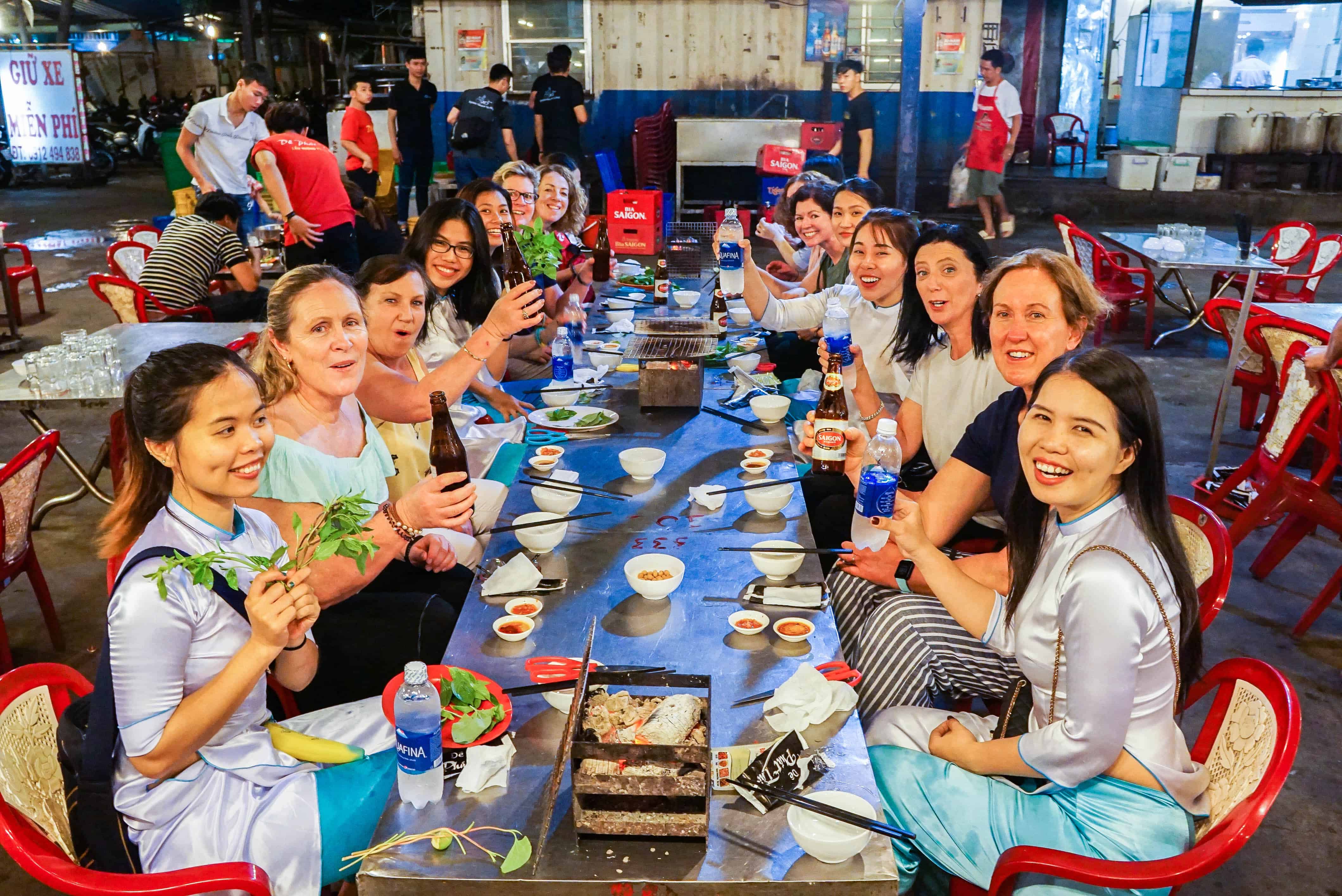
How To Get Around Vietnam
The tables below provide overviews of ways to get around in Vietnam.
Transportation Within Cities
The dense population of Vietnamese cities has created the need for a myriad of efficient inner-city transportation methods. A few of the best ones to use are summarized in the table below.
| Transportation Type | Safety | Cost | Hassle | Cultural Exposure | Comments |
|---|---|---|---|---|---|
| Bus | High | Low | High | High | Uncomfortable and difficult to navigate without any Vietnamese, but a great way to see locals in their real lives. |
| Grab Bike | Medium | Medium | Medium | Medium | See the “using Grab” section below for more details. |
| Taxi | High | High | Low | Low | See the “taxis” section below for more details. |
| Walk | Medium | Low | Medium | High | It’s slow, but it offers the full urban Vietnamese experience. |
| Hire a Car | High | High | Low | Low | It’s not very culturally authentic, but it’s the most convenient option. |
| Cyclo | Low | High | High | Medium | Way overpriced and purely a tourist gimmick. |
There are metro systems being worked on in both Hanoi and Saigon, but neither will be finished for at least another year or three.
We recommend that you also read our guide on how to get around Vietnamese cities without draining your wallet. The guide is written for Saigon, but the same principles apply to other Vietnamese metropolises.
Reputable Taxi Operators in Vietnam
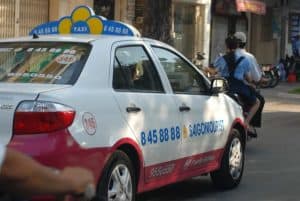
A quick word on safe taxis. If you’re going to use them, stick to the “approved” companies to avoid getting scammed. The companies to use are Mailinh and Vinasun in Saigon, Mailinh and Taxi Group in Hanoi. If you’re visiting another city, look up the safe taxi companies there. Many travelers do a double-take the first time they see Vietnamese taxi prices, because they are so much less than in most Western countries.
Using Grab in Vietnam (Uber of Southeast Asia)
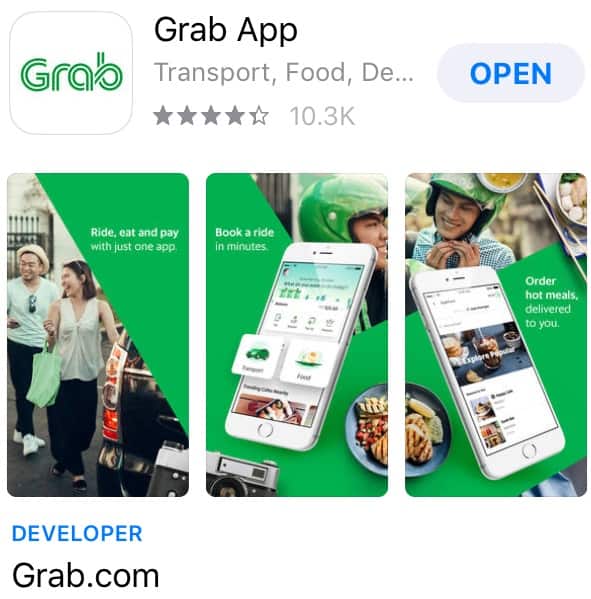
When you’re coming from the airport, you’ll probably want to spend a few extra bucks to get a nice, convenient taxi. After that, we highly recommend using Grab Car or Grab Bike instead if possible. After installing Grab on your phone, go to the app and you’ll be greeted by a well-designed menu that asks if you’d like to use the car or bike service. Select one, and a map screen allows you to specify a pick-up point and destination. The fare for the ride will be shown, and you can confirm your booking. You can even set up a credit card with the app to pay electronically if you want a bit of added convenience.
After you book, the Grab driver who accepted the booking will often call you to confirm your location. Although you might get lucky and get a driver who can speak English, most of them do not.
Pros: Hassle-free, shows fares in advance, and fares can be prepaid with credit card.
Cons: requires connection to the internet. May not be available in some smaller cities.
Transportation Between Cities
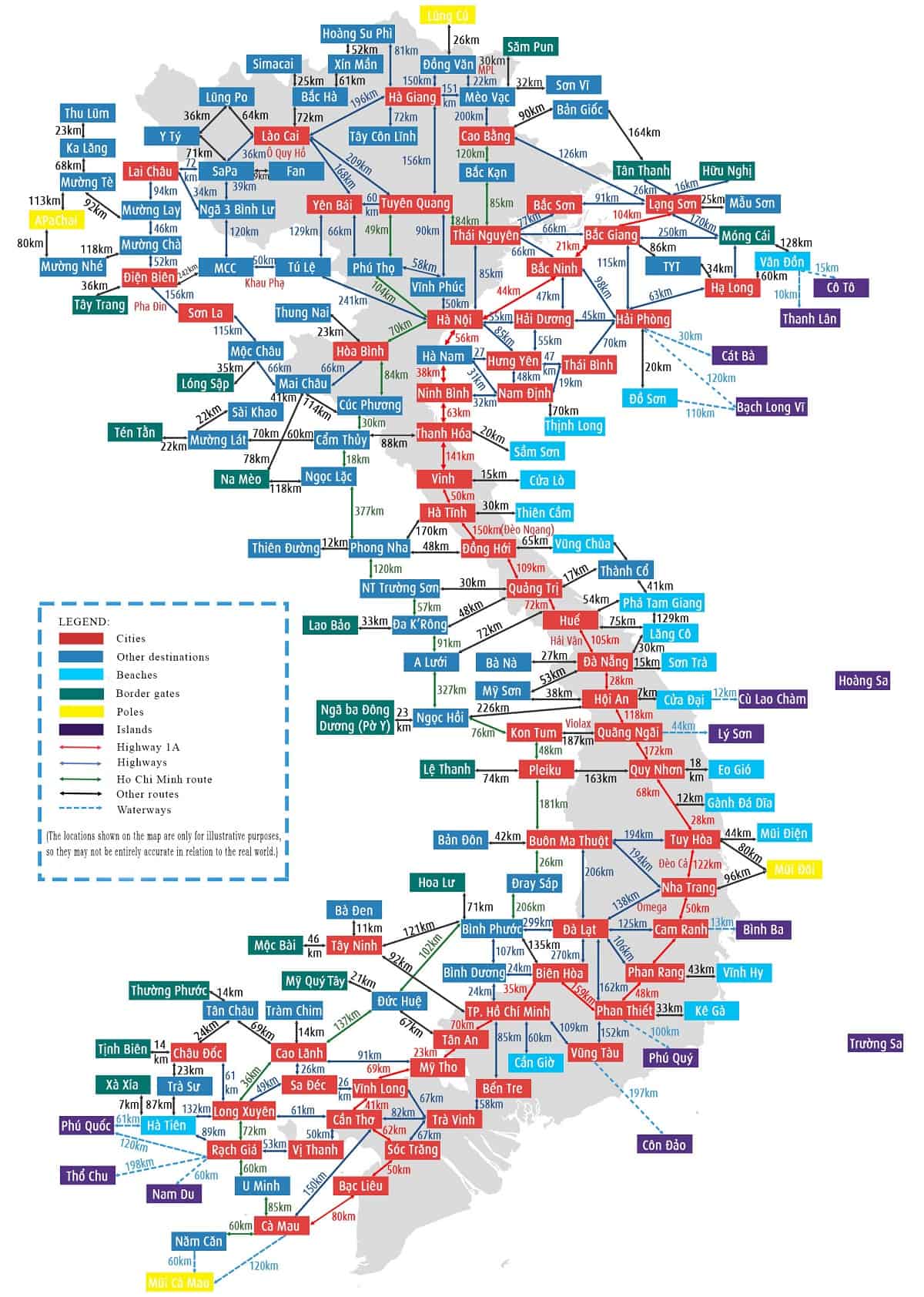
Vietnam is a remarkably varied country, both in terms of geography and culture. A trip here is hardly complete without traveling to at least a few different cities in different regions of the nation. The table below goes over some of the most popular ways to travel around Vietnam.
| Transportation Type | Safety | Cost | Hassle | Cultural Exposure | Comments |
|---|---|---|---|---|---|
| Plane | High | High | Low | Low | It’s quick and hassle-free, especially compared to other options in this table. |
| Bus | Medium | Low | Medium | Medium | Cheap but a bit cramped. Recommended only for shoestring budgets. |
| Train | High | High | Medium | Low | The train is comfortable but loud, slow, and no cheaper than flying. |
| Boat | High | High | Low | Low | A boat is a decent option if your destination is on the coast, but it’s not particularly cheap either. |
| Private Car | High | High | Low | Medium | It’s not cheap and takes a long time, but it’s easy to arrange and it’s a good chance to see the countryside. |
| Motorbike | Low | Medium | High | High | A good way to see the country up close, but it's strenuous and more dangerous than flying. |
To buy tickets for some of these cross-country transport options, consider the following sites:
Plane: Vietjet, Jetstar, Vietnam Airlines, Bamboo Airways
Bus: FUTA
Train: Baolau, 12Go, Vietnam Train, Vietnam Railways
Boat: Daily Travel
For intercity private car & motorbike travel you may have to arrange the trip in your city of origin.
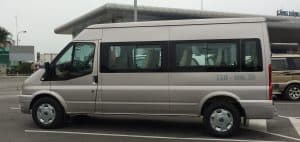
For much more detailed information on getting around Vietnam by land, air, or water, look over our in-depth guide.
What to do in Vietnam
There is a ton to do in Vietnam, and each area of the country offers very different landscapes. Eating is always a popular choice, as are shopping, visiting cultural monuments, and interacting with the locals. We could spend pages and pages discussing all the diversions offered in just a single corner of Vietnam. Instead, the table below provides a list of the most popular activities in most of the country’s major cities. It also lists our pick for the best day tour in that city, which will in most cases show you areas around the outer city you will have trouble discovering on your own.
| City | Popular Activities | Recommended Day Tour |
|---|---|---|
| Saigon | Explore Famous City Sites and Markets, Visit the Cu Chi Tunnels, Do some shopping | The Sights of Saigon by XO |
| Hanoi | People watch around Hoan Kiem Lake, Explore famous sites with Hanoikids student tour, Try some egg coffee | Soviet-Era Jeep Hanoi City Tour |
| Danang | Climb Marble Mountain, Visit Bana Hills & Golden Bridge, Ride The Hai Van Pass, Snorkle on Cham Islands | Xuan Tu Private Tour |
| Hoi An | Make some tailored clothes, Take a Cooking Class, Bicycle around Hoi An countryside, Visit My Son Ruins | Tommy Dao Tours |
| Dalat | Check out the flower farms, Visit the Crazy House, Canyoning | Amazing Dalat |
| Hue | Explore The Imperial City, Visit Ancient Tombs, Boat down the Perfume River | Mr Hoa’s Hue City Tour |
| Nha Trang | Diving & Snorkeling, Visit the Po Nagar Cham Towers, Visit Ba Ho Waterfalls | Vietnam Active Snorkeling |
| Mui Ne | Windsurfing, Golfing, Sled down Red Sand Dunes, Visit the Fairy Stream | Mui Ne Happy Tour |
| Phu Quoc | Unwind on Sao Beach, Visit Phu Quoc National Park, Visit Suoi Tranh Waterfall | Green Hat Holiday Kayaking |
| Sapa | Trekking, Exploring Hill Tribes, Visit Mount Fansipan | ETHOS |
| Halong Bay | Go on an overnight cruise, Kayak among the Karst formations, Explore the Caves, Visit Cat Ba Island | Au Co Cruises |
| Vung Tau | Eat fresh seafood, Visit the Christ The King Monument, take Cable car to Ho May Park | Long Tan-Nui Dat Guided Day Tours by VTVFCF |
| Mekong Delta | Visit Cai Rang Market, Explore Tra Su Mangrove Forest, Explore canals on a Sampan | Mekong Life Unscripted by Drive Vietnam |
Note: We would be careful about accepting activity suggestions from your hotel or accommodation provider because almost all hotels are paid a hefty commission from the recommended tour/activity vendor so they are not necessarily going to recommend you the best business. Be cognizant of this and find reputable vendors for yourself instead.
Here are some articles collected from the XO blog that will give you a more in-depth synopsis of what to do in Vietnam.
- 13-Item “What to Do in Vietnam” Bucket List
- 11 Best Tours in Vietnam
- The Best City Tours in Vietnam
- What to Do in Saigon
- Day Trips from Saigon
- What to Do in Hanoi
- Day Trips From Hanoi
- What to Do in Hoi An
- Ba Na Hills, A Great Day Trip in Central Vietnam

Family Activities in Vietnam
Vietnamese cities also have their fair share of activities that cater to families. In the table below, we’ve included one or two of these family activities. We chose activities that are safe and fun while still maintaining some degree of local culture.
| City | Recommended Family Activities |
|---|---|
| Saigon | Dam Sen Water Park, Artinus 3D Art Museum, Binh Quoi Village Park |
| Nha Trang | Vinpearl Land Amusement Park, Monkey Island, Nha Trang Aquarium |
| Vung Tau | Ho May Eco Amusement Park, Doppel Mayer Cable Car |
| Hanoi | Thang Long Water Puppet Theater, Vinpearl Land Water Park, Ionah Show Hanoi |
| Hoi An/Danang | Than Thai Hot Springs Park, Bana Hills Amusement Park, Tham Thanh Mural Village |
You can also check out our post about tips for traveling in Vietnam with kids.
Free Tours in Vietnam
Free tours are not only great for budget travelers, they are also a fantastic way to learn about a particular city. The itineraries are generally less rigid than paid tours, which means a higher degree of flexibility and therefore more opportunity for the tour-goers to tailor the tour itinerary to their own interests.
Free tours are also led by tour guides in training rather than actual professionals. This often means a less polished experience, but it also means you have more chance to get to know your guide on a personal level and maybe even make a new friend.

We’ve listed some of the best free tours in Vietnam below.
Visiting Vietnamese Markets is Great Fun and Free
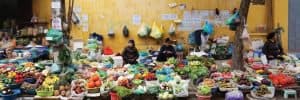
Possibly the best way to experience the heart of urban Vietnamese culture is to take a self-guided trip to a local market. For the most authentic, exciting experience possible, go during either the early morning (before 8 a.m.) or in the early evening (5:00-6:30 p.m.). People choose to shop at those times because it’s not too hot. Not only will you find some great deals, but you’ll find yourself ensconced in the local culture.
Useful Vietnamese Words and Phrases to Know
Learning just a few words and phrases when traveling can help break the ice with the locals and at the same time lower the chances that you will be a target of scammers. Many people that try to learn Vietnamese, however, find it a very difficult language to pick up since it has 6 tones, so pronouncing a word with the wrong tone will change its meaning. If you make an effort to learn a just few basic phrases however, it will go a long way in making you feel accepted by the community around you.
Watch this video by XO Tours to learn some handy Vietnamese phrases, complete with pronunciation.
Want to learn more? Here is a link to 100 basic phrases that will be useful when traveling Vietnam:
How to Perfect Your Vietnamese Accent
Here are 3 tips that will help make learning Vietnamese a little bit easier:
- All Vietnamese words are one syllable. Let your pronunciation reflect that.
- An accent over a letter affects the intonation of the whole word, not that individual letter.
- Try finding words in your own language with sounds similar to Vietnamese phrases to make them easier to remember. e.g. The words “thank you” in Vietnamese “cảm ơn” sounds somewhat similar to “come on!” in English.
We hope you found this guide to planning your trip to Vietnam useful! If there is any other important content that you feel should be included in this guide, please let us know in the comment section.


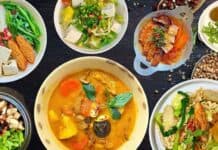
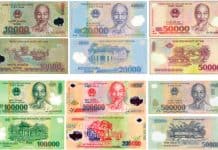

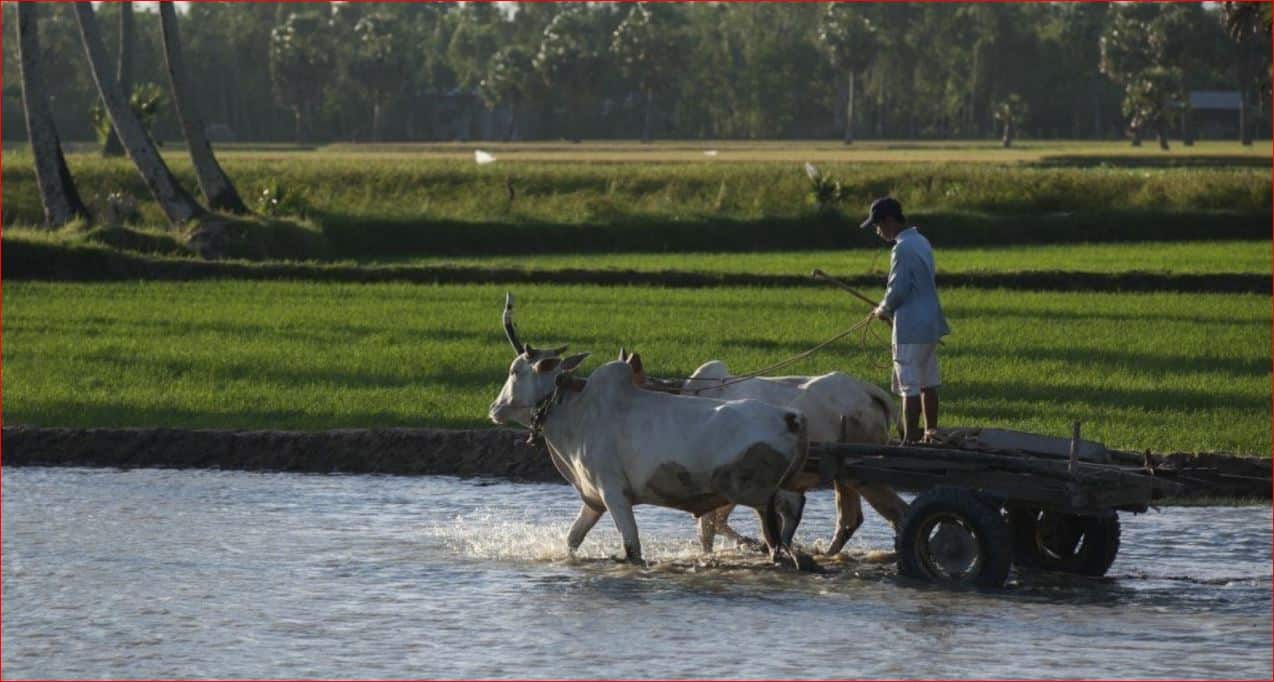
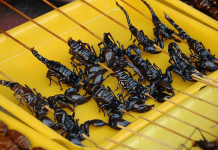



I was planning a trip in December, I’m going to save this post and make good use of it when i get there, thanks Dustin!
Have a great trip. Feel free to ask any questions not answered by our guides already, and don’t forget to let us know how your experience goes! Maybe we’ll even see you on one of our tours!
great article just planning where to go now so its really useful
You’re in for a treat! Vietnam is really a diverse and unique country from north to south.
What an incredible article! The most detailed and useful I’ve come across in my Vietnam trip planning.
Thank you so much
Thanks for informative sharing. I also spent a really good time there with my uncle’s family and we came back with stunning memories.
Hello XO Tours. We just completed an XO Foodie Tour in Ho Cho Ming City on Sunday January 19. Our guides were: Driver – Zoey (hien1) and Tour leader – Thy Vo.
We wanted you to let you know that we thoroughly enjoyed ourselves and had a fantastic time with both Zoey and Thy. We were amazed at how professional and knowledgeable these two young ladies were and how well this tour was set up and run. What a marvelous experience and a great way to see the City. You’re on our recommended list for anyone visiting Vietnam!